C2C Travels is a travel agency based in Utah that arranges travel itineraries for a variety of trips. While we specialize in all-inclusive resorts and cruises, we also craft European and bucket list vacations for individuals and couples too! Our itineraries offer a unique travelling experience no matter where in the world you're heading. Explore our website to learn more about C2C Travels and to be inspired by our featured itineraries or call us and let us customize your dream vacation!
After spending 20 years in the travel industry, traveling to tropical resorts, seeing great cities, and floating on fabulous cruises, we felt others should have the benefit of our experiences.
Today you stay in touch with cell phones, Facebook, Twitter, or the multitudes of other social opportunities, but was the last time you stepped back and watched a sunrise, or took a day to listen to the ocean wash onto the beach?
The everyday stress you feel is only compounded when you must try and plan a vacation for you or your family. So, let us plan your trip for you so you can enjoy that sunset.
Let us know where you want to unwind, and we will take care of the rest.
Click on the " Contact " button at the top of the page and fill out the form to let us know your vacation dreams.
We want all your travels to be simple and easy. C2C Travels wants to be your place to make waves!
Our vacation packages are always custom created. Our service suggests the necessities and guides you to make the right travel decision for you. When creating your travel package, we can include:
- Accommodations - Cruise, Resort, Hotel, Villa
- Transportation
- Rental Cars
- Travel Activities
- Travel Protection
When it comes to river cruising, why not cruise like a Viking?
If you know cruising, then you know ports and the hectic commercialization of unique cities. In river cruising, you get to see the small cities that make up wonderful countries without all the hustle and bustle.
Viking Cruises invented modern river cruising, reinvented ocean cruises & now are perfecting expedition cruises. Explore the world in comfort with Viking.
Viking River Cruises and C2C Travels have joined up to provide you with a vacation before your vacation and we want you to sit back and relax, we will take care of all the detail and you are on your way to a once in a lifetime trip, shoot, your young let us book you on several. Look here and then book.
C2C Travels - Loves Viking River Cruises
Conrad Maldives Rangali Island, The Maldives
Take your luxury all-inclusive resort experience to a whole new level when you book The Muraka Suite at Conrad Maldives Rangali Island. It is one of the most unique places you can sleep on the planet and perfect for a romantic honeymoon . The resort just finished up an extensive, multimillion-dollar renovation that led to a reopening in February 2022.
What is luxury all-inclusive vs ultra all-inclusive?
An ultra all-inclusive is an all-inclusive resort that offers even more amenities, unique experiences, and special benefits than a standard all inclusive package. These extras can include premiums like unlimited food and top-shelf drinks, exclusive island excursions, and spa treatments.
Where do you want to go to be pampered? We can book it!
Are cruises worth it for families?
Ships on any cruise line offer a variety of activities for almost every age group and a multitude of dining options for even the pickiest of palates. Also, many ships have places where kids can go and participate in activities or just hang out with other kids, allowing the adults some time alone.
Best Cruise Lines for Families
Disney Cruise Line
Royal Caribbean
Carnival Cruise Line
Norwegian Cruise Line
Best Cruise Lines for Adults
Viking Ocean
Celebrity Cruises
Holland America Cruise Line
Royal Caribbean International
Princess Cruises
Regent Seven Seas Cruises
Seabourn Cruise Line
To book- contact us!
We'll take great care of you and your vacation!
Feeling Sporty? If so, C2C Has the right venue for you.
Sports Empire is your source for sports trips, event tickets.
They'll get you to the sports you love such as baseball, basketball, football, golf, hockey, horse racing, soccer and tennis.
Disney's world of vacation options gives you opportunities to enhance your visits with more Disney imagination and more Disney magic than ever. Discover wondrous possibilities you didn't even know existed.
Ask us for more information.
Best Time to Travel: March to July
Cruise to unforgettable destinations. Relax on a Southern, Eastern or Western Caribbean cruise!
The Eastern Caribbean is a shopaholic's paradise nestled among incredible beaches for those looking for plenty of time to unwind. On a Western Caribbean itinerary, you’ll visit ports such as Belize or Cozumel, but each island has plenty of activity in the form of ocean adventures, nature preserves, and historic cities.
You can also Set sail for a sun-soaked, wind-swept, salty, and sandy adventure with a cruise to Southern Caribbean. Popular islands include the French West Indies (Martinique, Guadalupe, and St. Bart's), lush St. Lucia, Dominica, and Grenada, and the sandy ABCs (Aruba, Bonaire, and Curacao). With Barbados and Puerto Rico as main embarkation ports, your cruise vacation begins before you even board the ship.
Best Time to Travel: May to September
We’ll help you find the best Alaska cruise deals and get you ready to venture into the stunning landscape of glaciers, villages, rushing waters and wildlife.
If you’re adventurous, this is the cruise for you. It's an experience you can't get anywhere else and completely different than sailing a typical cruise. The Great Land awaits – Let’s set sail.
Best Time: May/June or September/October
There are a few things in life that you need to see: the ancient history ruins of Italy, the white stone buildings of Santorini, the ancient temples of Greece, and the stunning Barcelona. The Mediterranean is filled with picturesque islands, the best wine in the world, and all the better by cruising along in a ship that has it all.
We can get you Island-hopping with excursions set in advance, and you’ll be certain to have an amazing time!
Shop Travel Tours
Shop Cruise Shore Excursions
Protect Your Trip - Get Your Quote Here!
"Our cruise was amazing and the service C2C provided was just as good. Instead of stressing about the flights, hotels, how to get there, where to go, etc... we had no problems.
The travels side to our vacation was so simple and easy. Plus, when we arrived on the cruise ship, room service brought us a tray of cupcakes from C2C. It was perfect.
Justin, Utah
You are using an outdated browser. Upgrade your browser today or install Google Chrome Frame to better experience this site.

Cuba Traveler View
Travel health notices, vaccines and medicines, non-vaccine-preventable diseases, stay healthy and safe.
- Packing List
After Your Trip
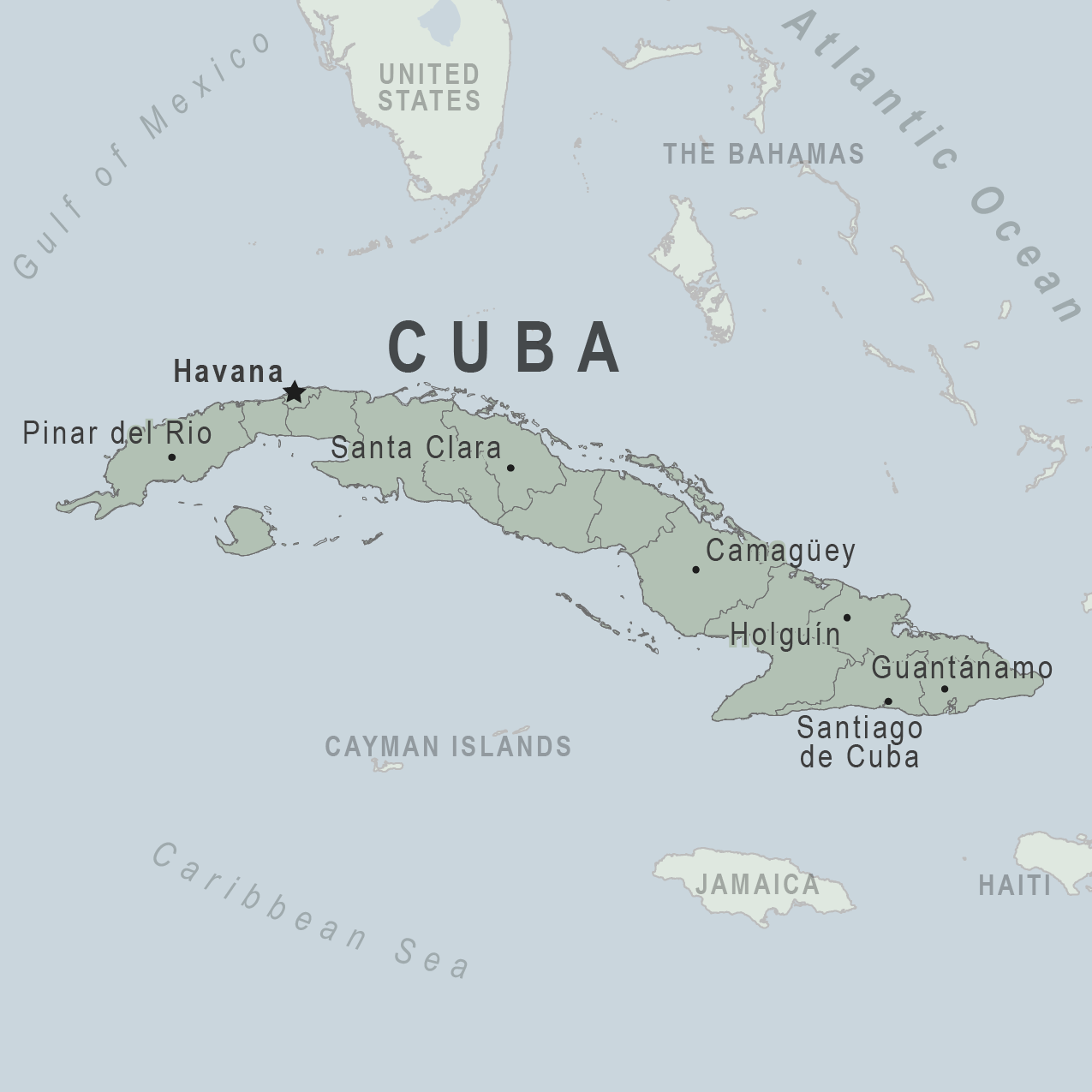
There are no notices currently in effect for Cuba.
⇧ Top
Check the vaccines and medicines list and visit your doctor at least a month before your trip to get vaccines or medicines you may need. If you or your doctor need help finding a location that provides certain vaccines or medicines, visit the Find a Clinic page.
Routine vaccines
Recommendations.
Make sure you are up-to-date on all routine vaccines before every trip. Some of these vaccines include
- Chickenpox (Varicella)
- Diphtheria-Tetanus-Pertussis
- Flu (influenza)
- Measles-Mumps-Rubella (MMR)
Immunization schedules
All eligible travelers should be up to date with their COVID-19 vaccines. Please see Your COVID-19 Vaccination for more information.
COVID-19 vaccine
Hepatitis A
Recommended for unvaccinated travelers one year old or older going to Cuba.
Infants 6 to 11 months old should also be vaccinated against Hepatitis A. The dose does not count toward the routine 2-dose series.
Travelers allergic to a vaccine component or who are younger than 6 months should receive a single dose of immune globulin, which provides effective protection for up to 2 months depending on dosage given.
Unvaccinated travelers who are over 40 years old, immunocompromised, or have chronic medical conditions planning to depart to a risk area in less than 2 weeks should get the initial dose of vaccine and at the same appointment receive immune globulin.
Hepatitis A - CDC Yellow Book
Dosing info - Hep A
Hepatitis B
Recommended for unvaccinated travelers younger than 60 years old traveling to Cuba. Unvaccinated travelers 60 years and older may get vaccinated before traveling to Cuba.
Hepatitis B - CDC Yellow Book
Dosing info - Hep B
Cases of measles are on the rise worldwide. Travelers are at risk of measles if they have not been fully vaccinated at least two weeks prior to departure, or have not had measles in the past, and travel internationally to areas where measles is spreading.
All international travelers should be fully vaccinated against measles with the measles-mumps-rubella (MMR) vaccine, including an early dose for infants 6–11 months, according to CDC’s measles vaccination recommendations for international travel .
Measles (Rubeola) - CDC Yellow Book
Rabid dogs are commonly found in Cuba. However, if you are bitten or scratched by a dog or other mammal while in Cuba, rabies treatment is often available.
Consider rabies vaccination before your trip if your activities mean you will be around dogs or wildlife.
Travelers more likely to encounter rabid animals include
- Campers, adventure travelers, or cave explorers (spelunkers)
- Veterinarians, animal handlers, field biologists, or laboratory workers handling animal specimens
- Visitors to rural areas
Since children are more likely to be bitten or scratched by a dog or other animals, consider rabies vaccination for children traveling to Cuba.
Rabies - CDC Yellow Book
Recommended for most travelers, especially those staying with friends or relatives or visiting smaller cities or rural areas.
Typhoid - CDC Yellow Book
Dosing info - Typhoid
Avoid contaminated water
Leptospirosis
How most people get sick (most common modes of transmission)
- Touching urine or other body fluids from an animal infected with leptospirosis
- Swimming or wading in urine-contaminated fresh water, or contact with urine-contaminated mud
- Drinking water or eating food contaminated with animal urine
- Avoid contaminated water and soil
Clinical Guidance
Avoid bug bites.
- Mosquito bite
- Avoid Bug Bites
- An infected pregnant woman can spread it to her unborn baby
Airborne & droplet
- Breathing in air or accidentally eating food contaminated with the urine, droppings, or saliva of infected rodents
- Bite from an infected rodent
- Less commonly, being around someone sick with hantavirus (only occurs with Andes virus)
- Avoid rodents and areas where they live
- Avoid sick people
Tuberculosis (TB)
- Breathe in TB bacteria that is in the air from an infected and contagious person coughing, speaking, or singing.
Learn actions you can take to stay healthy and safe on your trip. Vaccines cannot protect you from many diseases in Cuba, so your behaviors are important.
Eat and drink safely
Food and water standards around the world vary based on the destination. Standards may also differ within a country and risk may change depending on activity type (e.g., hiking versus business trip). You can learn more about safe food and drink choices when traveling by accessing the resources below.
- Choose Safe Food and Drinks When Traveling
- Water Treatment Options When Hiking, Camping or Traveling
- Global Water, Sanitation and Hygiene | Healthy Water
- Avoid Contaminated Water During Travel
You can also visit the Department of State Country Information Pages for additional information about food and water safety.
Prevent bug bites
Bugs (like mosquitoes, ticks, and fleas) can spread a number of diseases in Cuba. Many of these diseases cannot be prevented with a vaccine or medicine. You can reduce your risk by taking steps to prevent bug bites.
What can I do to prevent bug bites?
- Cover exposed skin by wearing long-sleeved shirts, long pants, and hats.
- Use an appropriate insect repellent (see below).
- Use permethrin-treated clothing and gear (such as boots, pants, socks, and tents). Do not use permethrin directly on skin.
- Stay and sleep in air-conditioned or screened rooms.
- Use a bed net if the area where you are sleeping is exposed to the outdoors.
What type of insect repellent should I use?
- FOR PROTECTION AGAINST TICKS AND MOSQUITOES: Use a repellent that contains 20% or more DEET for protection that lasts up to several hours.
- Picaridin (also known as KBR 3023, Bayrepel, and icaridin)
- Oil of lemon eucalyptus (OLE) or para-menthane-diol (PMD)
- 2-undecanone
- Always use insect repellent as directed.
What should I do if I am bitten by bugs?
- Avoid scratching bug bites, and apply hydrocortisone cream or calamine lotion to reduce the itching.
- Check your entire body for ticks after outdoor activity. Be sure to remove ticks properly.
What can I do to avoid bed bugs?
Although bed bugs do not carry disease, they are an annoyance. See our information page about avoiding bug bites for some easy tips to avoid them. For more information on bed bugs, see Bed Bugs .
For more detailed information on avoiding bug bites, see Avoid Bug Bites .
Stay safe outdoors
If your travel plans in Cuba include outdoor activities, take these steps to stay safe and healthy during your trip.
- Stay alert to changing weather conditions and adjust your plans if conditions become unsafe.
- Prepare for activities by wearing the right clothes and packing protective items, such as bug spray, sunscreen, and a basic first aid kit.
- Consider learning basic first aid and CPR before travel. Bring a travel health kit with items appropriate for your activities.
- If you are outside for many hours in heat, eat salty snacks and drink water to stay hydrated and replace salt lost through sweating.
- Protect yourself from UV radiation : use sunscreen with an SPF of at least 15, wear protective clothing, and seek shade during the hottest time of day (10 a.m.–4 p.m.).
- Be especially careful during summer months and at high elevation. Because sunlight reflects off snow, sand, and water, sun exposure may be increased during activities like skiing, swimming, and sailing.
- Very cold temperatures can be dangerous. Dress in layers and cover heads, hands, and feet properly if you are visiting a cold location.
Stay safe around water
- Swim only in designated swimming areas. Obey lifeguards and warning flags on beaches.
- Practice safe boating—follow all boating safety laws, do not drink alcohol if driving a boat, and always wear a life jacket.
- Do not dive into shallow water.
- Do not swim in freshwater in developing areas or where sanitation is poor.
- Avoid swallowing water when swimming. Untreated water can carry germs that make you sick.
- To prevent infections, wear shoes on beaches where there may be animal waste.
Keep away from animals
Most animals avoid people, but they may attack if they feel threatened, are protecting their young or territory, or if they are injured or ill. Animal bites and scratches can lead to serious diseases such as rabies.
Follow these tips to protect yourself:
- Do not touch or feed any animals you do not know.
- Do not allow animals to lick open wounds, and do not get animal saliva in your eyes or mouth.
- Avoid rodents and their urine and feces.
- Traveling pets should be supervised closely and not allowed to come in contact with local animals.
- If you wake in a room with a bat, seek medical care immediately. Bat bites may be hard to see.
All animals can pose a threat, but be extra careful around dogs, bats, monkeys, sea animals such as jellyfish, and snakes. If you are bitten or scratched by an animal, immediately:
- Wash the wound with soap and clean water.
- Go to a doctor right away.
- Tell your doctor about your injury when you get back to the United States.
Consider buying medical evacuation insurance. Rabies is a deadly disease that must be treated quickly, and treatment may not be available in some countries.
Reduce your exposure to germs
Follow these tips to avoid getting sick or spreading illness to others while traveling:
- Wash your hands often, especially before eating.
- If soap and water aren’t available, clean hands with hand sanitizer (containing at least 60% alcohol).
- Don’t touch your eyes, nose, or mouth. If you need to touch your face, make sure your hands are clean.
- Cover your mouth and nose with a tissue or your sleeve (not your hands) when coughing or sneezing.
- Try to avoid contact with people who are sick.
- If you are sick, stay home or in your hotel room, unless you need medical care.
Avoid sharing body fluids
Diseases can be spread through body fluids, such as saliva, blood, vomit, and semen.
Protect yourself:
- Use latex condoms correctly.
- Do not inject drugs.
- Limit alcohol consumption. People take more risks when intoxicated.
- Do not share needles or any devices that can break the skin. That includes needles for tattoos, piercings, and acupuncture.
- If you receive medical or dental care, make sure the equipment is disinfected or sanitized.
Know how to get medical care while traveling
Plan for how you will get health care during your trip, should the need arise:
- Carry a list of local doctors and hospitals at your destination.
- Review your health insurance plan to determine what medical services it would cover during your trip. Consider purchasing travel health and medical evacuation insurance.
- Carry a card that identifies, in the local language, your blood type, chronic conditions or serious allergies, and the generic names of any medications you take.
- Some prescription drugs may be illegal in other countries. Call Cuba’s embassy to verify that all of your prescription(s) are legal to bring with you.
- Bring all the medicines (including over-the-counter medicines) you think you might need during your trip, including extra in case of travel delays. Ask your doctor to help you get prescriptions filled early if you need to.
Many foreign hospitals and clinics are accredited by the Joint Commission International. A list of accredited facilities is available at their website ( www.jointcommissioninternational.org ).
In some countries, medicine (prescription and over-the-counter) may be substandard or counterfeit. Bring the medicines you will need from the United States to avoid having to buy them at your destination.
Select safe transportation
Motor vehicle crashes are the #1 killer of healthy US citizens in foreign countries.
In many places cars, buses, large trucks, rickshaws, bikes, people on foot, and even animals share the same lanes of traffic, increasing the risk for crashes.
Be smart when you are traveling on foot.
- Use sidewalks and marked crosswalks.
- Pay attention to the traffic around you, especially in crowded areas.
- Remember, people on foot do not always have the right of way in other countries.
Riding/Driving
Choose a safe vehicle.
- Choose official taxis or public transportation, such as trains and buses.
- Ride only in cars that have seatbelts.
- Avoid overcrowded, overloaded, top-heavy buses and minivans.
- Avoid riding on motorcycles or motorbikes, especially motorbike taxis. (Many crashes are caused by inexperienced motorbike drivers.)
- Choose newer vehicles—they may have more safety features, such as airbags, and be more reliable.
- Choose larger vehicles, which may provide more protection in crashes.
Think about the driver.
- Do not drive after drinking alcohol or ride with someone who has been drinking.
- Consider hiring a licensed, trained driver familiar with the area.
- Arrange payment before departing.
Follow basic safety tips.
- Wear a seatbelt at all times.
- Sit in the back seat of cars and taxis.
- When on motorbikes or bicycles, always wear a helmet. (Bring a helmet from home, if needed.)
- Avoid driving at night; street lighting in certain parts of Cuba may be poor.
- Do not use a cell phone or text while driving (illegal in many countries).
- Travel during daylight hours only, especially in rural areas.
- If you choose to drive a vehicle in Cuba, learn the local traffic laws and have the proper paperwork.
- Get any driving permits and insurance you may need. Get an International Driving Permit (IDP). Carry the IDP and a US-issued driver's license at all times.
- Check with your auto insurance policy's international coverage, and get more coverage if needed. Make sure you have liability insurance.
- Avoid using local, unscheduled aircraft.
- If possible, fly on larger planes (more than 30 seats); larger airplanes are more likely to have regular safety inspections.
- Try to schedule flights during daylight hours and in good weather.
Medical Evacuation Insurance
If you are seriously injured, emergency care may not be available or may not meet US standards. Trauma care centers are uncommon outside urban areas. Having medical evacuation insurance can be helpful for these reasons.
Helpful Resources
Road Safety Overseas (Information from the US Department of State): Includes tips on driving in other countries, International Driving Permits, auto insurance, and other resources.
The Association for International Road Travel has country-specific Road Travel Reports available for most countries for a minimal fee.
Maintain personal security
Use the same common sense traveling overseas that you would at home, and always stay alert and aware of your surroundings.
Before you leave
- Research your destination(s), including local laws, customs, and culture.
- Monitor travel advisories and alerts and read travel tips from the US Department of State.
- Enroll in the Smart Traveler Enrollment Program (STEP) .
- Leave a copy of your itinerary, contact information, credit cards, and passport with someone at home.
- Pack as light as possible, and leave at home any item you could not replace.
While at your destination(s)
- Carry contact information for the nearest US embassy or consulate .
- Carry a photocopy of your passport and entry stamp; leave the actual passport securely in your hotel.
- Follow all local laws and social customs.
- Do not wear expensive clothing or jewelry.
- Always keep hotel doors locked, and store valuables in secure areas.
- If possible, choose hotel rooms between the 2nd and 6th floors.
Healthy Travel Packing List
Use the Healthy Travel Packing List for Cuba for a list of health-related items to consider packing for your trip. Talk to your doctor about which items are most important for you.
Why does CDC recommend packing these health-related items?
It’s best to be prepared to prevent and treat common illnesses and injuries. Some supplies and medicines may be difficult to find at your destination, may have different names, or may have different ingredients than what you normally use.
If you are not feeling well after your trip, you may need to see a doctor. If you need help finding a travel medicine specialist, see Find a Clinic . Be sure to tell your doctor about your travel, including where you went and what you did on your trip. Also tell your doctor if you were bitten or scratched by an animal while traveling.
For more information on what to do if you are sick after your trip, see Getting Sick after Travel .
Map Disclaimer - The boundaries and names shown and the designations used on maps do not imply the expression of any opinion whatsoever on the part of the Centers for Disease Control and Prevention concerning the legal status of any country, territory, city or area or of its authorities, or concerning the delimitation of its frontiers or boundaries. Approximate border lines for which there may not yet be full agreement are generally marked.
Other Destinations
If you need help finding travel information:
Message & data rates may apply. CDC Privacy Policy
File Formats Help:
- Adobe PDF file
- Microsoft PowerPoint file
- Microsoft Word file
- Microsoft Excel file
- Audio/Video file
- Apple Quicktime file
- RealPlayer file
- Zip Archive file
Exit Notification / Disclaimer Policy
- The Centers for Disease Control and Prevention (CDC) cannot attest to the accuracy of a non-federal website.
- Linking to a non-federal website does not constitute an endorsement by CDC or any of its employees of the sponsors or the information and products presented on the website.
- You will be subject to the destination website's privacy policy when you follow the link.
- CDC is not responsible for Section 508 compliance (accessibility) on other federal or private website.
We’re sorry, this site is currently experiencing technical difficulties. Please try again in a few moments. Exception: request blocked
The rules for Americans visiting Cuba in 2022

May 20, 2022 • 5 min read
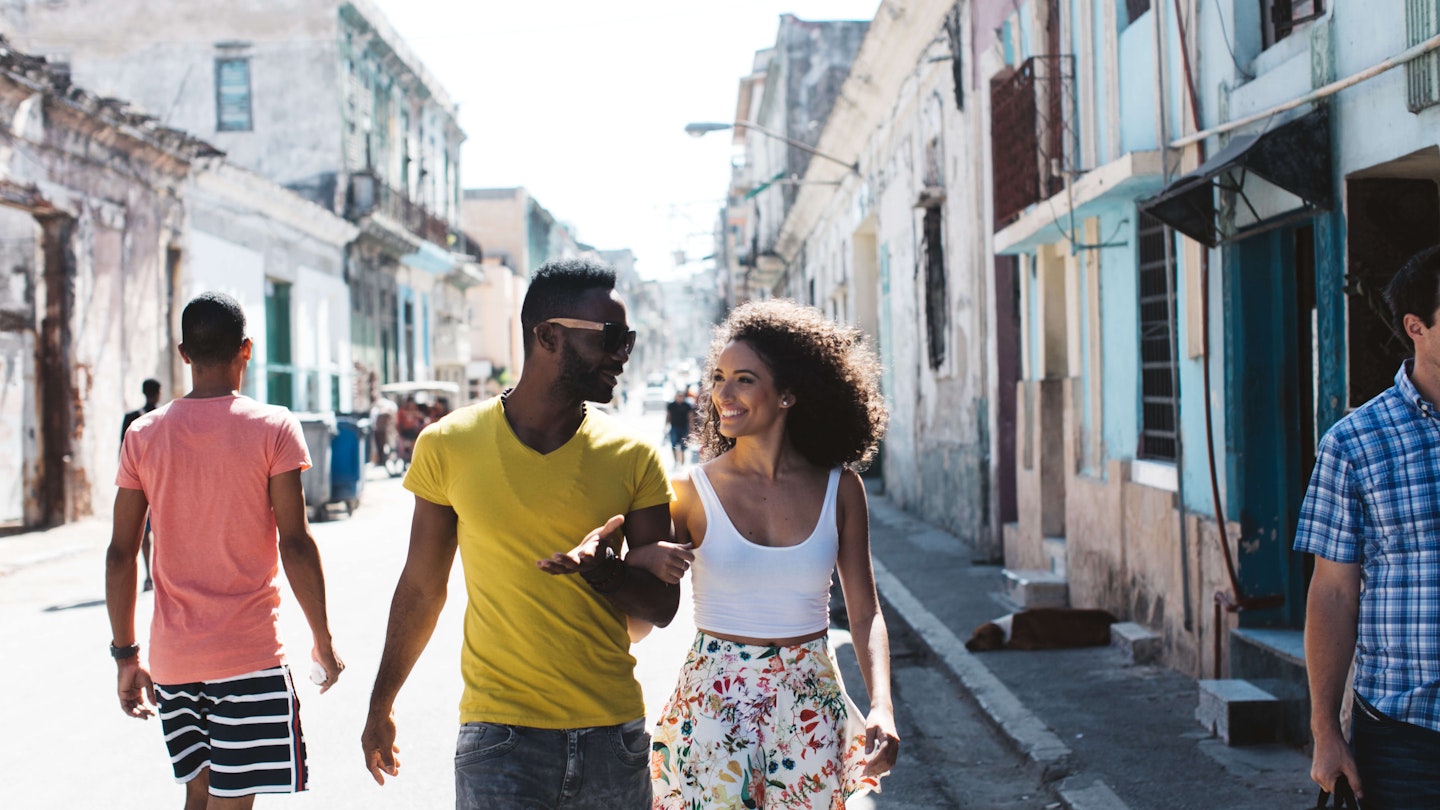
It may soon be easier for Americans to visit Cuba © Matt Porteous / Getty Images
The Biden Administration took several steps toward thawing US-Cuba relations on May 16, 2022, after five years of tightened restrictions. While the measures don’t fully restore the openings of the Obama era, they mark an encouraging start for struggling Cubans and aspiring US travelers.
What has changed?
Of direct interest to US travelers is the Biden Administration’s promise to expand authorized travel in support of the Cuban people. This includes opening up flights to airports beyond Havana (which were closed to US aircraft during the Trump era) and reinstating group people-to-people travel and other categories of group educational travel. Both measures will be good news to US travel agencies who have battled with increased red tape since 2017.
As yet, there is no word that the US will reinstate individual people-to-people travel, the category that led to a huge influx of US visitors to Cuba between 2016 and 2017. Nor have any Cuban state entities been removed from the US’s restricted list, meaning it’s still difficult for Americans to legally stay in Cuban hotels.
The directives have also lifted limits on family remittances (previously capped at $1,000 a quarter) to provide help in facilitating family reunions and supporting independent Cuban entrepreneurs.
Getting to Cuba from the US
Flying to Havana is one of the easier parts of the Cuba conundrum. As of May 2022, there are approximately a dozen flights a day between the US and Havana departing from the Florida cities of Miami, Tampa, and Fort Lauderdale. Operating airlines include American Airlines , Southwest Airlines , and JetBlue .
More Cuban airports will likely open up to US flights in the coming months.
The 12 categories of travel licenses for US citizens
US law states that US citizens can only travel to Cuba on a ‘general license’ based on one of 12 different approved categories , which include family visits, educational and religious activities, public performances and exhibitions, and the vague sounding 'support for the Cuban people.' Licenses are self-qualifying (there’s no long-winded paperwork), but you’ll be asked to state your category of choice in a signed travel affidavit when booking travel to Cuba. More details are available online from the US Treasury .
The vast majority of current visitors are Cuban Americans entering under the ‘family travel’ category. Independent travelers with no affiliations can qualify under the conveniently vague ‘support for the Cuban people’ category, which is the easiest option for people looking to explore the island. However, bear in mind that before you travel, you’ll need to draw up a detailed itinerary of your plans. Additionally, on your return, you’ll be required to keep all your travel receipts for five years.

The Cuba tourist card
To enter Cuba, all visitors need to present a completed Tourist Card — which serves a similar function to a tourist visa. These are usually available through your airline (ask when booking). Alternatively, you can purchase one through a Cuban travel agency. Costs range from US$50 to US$85, including processing fees.
Health protocols for travel to Cuba
Pre-travel COVID-19 tests and vaccination certificates are no longer required to enter Cuba from the US. Random COVID-19 tests may still be administered at the airport but there’s no mandatory quarantine unless you test positive. Departing US passengers will need a negative rapid-antigen test to re-enter the US. Tests can be procured at Havana’s José Martí International Airport before departure.
All arriving travelers must fill out an online D’Viajeros form containing information relating to public health and immigration. You’re also required to take out medical insurance that includes cover for COVID-19; this may be included in the cost of your air ticket from the US. Health officials make spot checks at the airport.

Booking travel to Cuba through a travel agency
If it’s your first time traveling to Cuba, it is highly recommended that you enlist the services of a specialist US-Cuba travel agency. Both Cuban Travel Services and Marazul offer comprehensive on-the-ground information and can help organize flights and accommodation.
Alternatively, you can join an organized trip, which takes a lot of the hassle out of traveling to Cuba. Long-time US-Cuba specialists, Insight Cuba are offering a three-night ‘Weekend in Havana’ and a seven-night ‘Classic Cuba Tour’ in 2022.
Where to stay in Cuba
American citizens are not currently allowed to stay in Cuba’s government-run hotels or use most state-owned enterprises. Instead, it’s best to opt for private accommodation such as apartments, B&Bs and homestays (known in Cuba as casas particulares ). Airbnb has lots of listings of accommodations that are open to US citizens.
For restaurants, stick to private paladares (family-run restaurants, often in the owner's home) where the food quality is better. To get around, use private guides and taxis. In doing so, you’ll be enthusiastically ‘supporting the Cuban people.’

Money tips for Cuba in 2022
Credit cards linked to US banks don’t work in Cuba and the US dollar was taken out of circulation in June 2021. American travelers are best off arriving with plenty of cash in a non-US currency – the euro is the most favored foreign currency and is accepted by most private businesses, from casa particulares to restaurants and taxi drivers, meaning you won’t have to buy many Cuban pesos (which are worthless outside Cuba).
Beware: The Cuban economy is in a state of extreme flux. The current euro-peso black market exchange rate is over four times that of the banks.
In November 2021, Cuba introduced a tarjeta prepago (prepaid card) designed primarily to aid US travelers with American credit cards. You can purchase and pre-load a tarjeta prepago at a bank in Cuba or at the airport and use it to buy goods that can otherwise only be paid for with a credit card, such as medical services, cigars, and bus tickets. Cards can be loaded with amounts equivalent to US$1000, US$500 or US$200. However, you can only pay for the card in a non-US currency. Euros, Canadian dollars, and pounds sterling are all accepted, cash only.
This article was first published December 2020 and updated May 2022
Explore related stories

Destination Practicalities
Jan 9, 2024 • 4 min read
Choose the best time for your visit to Cuba with this seasonal guide to lively festivals, top beach weather and budget prices.
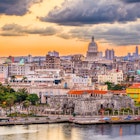
Jan 9, 2024 • 6 min read

Jan 7, 2024 • 10 min read
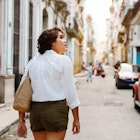
Jan 6, 2024 • 7 min read

Jan 5, 2024 • 8 min read

Jan 5, 2024 • 4 min read
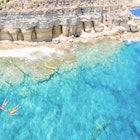
Nov 24, 2023 • 7 min read

Jan 6, 2023 • 7 min read

Jan 5, 2023 • 8 min read
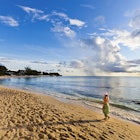
Oct 5, 2020 • 15 min read

Yes, Americans Can Still Travel to Cuba. Here’s How
Is it legal for u.s. citizens to travel to cuba what types of travel can they take and what are cuba tourist cards here’s what you need to know about visiting cuba..
- Copy Link copied

Havana, Cuba’s capital city, is known for its vintage cars and historic architecture.
Courtesy of Spencer Everett/Unsplash
Cuba is a beautiful Caribbean island with a complex history and rich culture. But for decades, it’s been just beyond the reach of many Americans. In addition to several difficult years involving devastating hurricanes, pandemic-era travel restrictions, ever-changing U.S. State Department travel advisories, and frequently updated trade and tourism regulations , it’s not surprising that many Americans may be confused about whether and how U.S. travelers can legally visit Cuba .
As of early 2024, the short answer is: Yes, you can travel to Cuba as a U.S. citizen. There are, however, some hoops you’ll need to jump through, because (technically speaking) travel to Cuba for pure vacationing isn’t allowed. For U.S. citizens interested in planning a trip to Cuba, here’s what you need to know before you go.
Can you travel to Cuba?
The relationship between the United States and Cuba has been tumultuous, to say the least. Following the Cuban Revolution during the 1950s and the subsequent rise of Fidel Castro’s regime, diplomatic ties between the two nations deteriorated rapidly. In 1960, the United States imposed a trade embargo on Cuba, effectively severing most economic and political connections.
In the time since, travel between the two countries has been heavily restricted by the U.S. government, which has implemented various policies to discourage or prohibit its citizens from visiting Cuba. Making matters more complex, those policies often changed with each presidential administration. The island nation was more accessible during the Carter, Clinton, and Obama years and more closed off during the G.W. Bush and Trump years.
In 2014, it became significantly easier for Americans to visit Cuba after President Obama announced a series of measures aimed at normalizing diplomatic ties and loosening travel restrictions to allow Americans to visit for certain purposes (more on that later). Additionally, in 2016, commercial flights between the United States and Cuba resumed for the first time in more than half a century.
However, the Trump administration made it significantly harder to visit Cuba. During his time in office, President Trump enacted more than 200 measures against Cuba , which included limiting what Cuban airports flights from the U.S. could fly into, banning cruises from stopping in Cuba, and eliminating the most common visa category under which U.S. citizens planned legal visits to Cuba (known as “people-to-people” travel).
Then in May 2022, President Biden’s administration announced it would undo many of the Cuba-related restrictions enacted under Trump and would work on expanding authorized travel. Under the new order, regular passenger and charter airplanes are again allowed to fly to any Cuban airport (and airlines announced new flight paths ). And officials said that the “people-to-people” category of travel, under which many tours and organized travel companies bring U.S. travelers to Cuba, will ultimately return, though there is no timeline on when that will happen.

Cuba’s music scene is also a big draw.
Photo by Shutterstock
How to travel to Cuba as an American citizen
U.S. law states that those who want to go to Cuba need to qualify for a “general license” based on one of 12 approved categories.
The 12 categories currently authorized by U.S. government, for travel to Cuba are:
- Family visits
- Official business of the U.S. government, foreign governments, and certain intergovernmental organizations
- Journalistic activity
- Professional research and professional meetings
- Educational activities
- Religious activities
- Public performances, clinics, workshops, athletic and other competitions, and exhibitions
- Support for the Cuban people
- Humanitarian projects
- Activities of private foundations or research or educational institutes
- Exportation, importation, or transmission of information or informational materials
- Certain authorized export transactions
Licenses are self-qualifying, meaning that when you purchase your airline ticket, you’ll be asked to state your category in a signed affidavit before checkout.
When former President Obama first eased travel restrictions to Cuba , the move allowed leisure travelers to pursue self-led trips under the “people-to-people” educational activities category. Today, the “support for the Cuban people” category is the most popular because it’s the broadest.
What the “support for the Cuban people” license entails
To adhere to the requirements for independent travel under “support for the Cuban people,” travelers must first declare the category (when prompted) while booking flights and lodging. As part of the license, travelers are also expected to prepare an itinerary outlining how their trip will fulfill the category’s terms and contribute to Cuba’s local economy. (This itinerary could be—but isn’t always—requested on arrival to the country.)
An appropriate “support for the Cuban people” itinerary could including staying in casa particulares (locally run guesthouses), visiting Cuban-owned businesses, going on tours (like classic car rides or architecture walking tours) run by Cubans, visiting independent museums and galleries, partaking in cultural dance and music classes, and eating at locally owned restaurants and markets. (For specific recommendations and local resources, check out AFAR’s Cuba Travel Guide .)
Travelers can visit independently under that category, though it’s important you keep a record of your itinerary and your receipts: The U.S. government can ask for them up to five years after the trip.
Can you still travel to Cuba with organized tour operators?
Even though the Trump administration’s tightened restrictions on travel to Cuba prohibited organized “people-to-people” tours entirely, many tour companies have switched their approach to adhere to the “support for the Cuban people” license, according to Tom Popper, president of U.S.-based tour operator InsightCuba . Other tour providers that offer “people-to-people” trips, such as GeoEx Adventure Travel , Flash Pack , Intrepid Travel, and G Adventures, have similarly transitioned their program itineraries in order to offer legal trips to Cuba that comply with the regulations.
Challenges and considerations for travel to Cuba
Despite the easing of restrictions, traveling to Cuba as an American still presents some challenges. For example, there are limited banking services available to U.S. visitors, and American credit and debit cards are not typically accepted (as noted on the website for the U.S. embassy in Cuba ), so it’s important to bring plenty of cash. Similarly, internet access in Cuba is limited —expect connections to be patchy .
How to get a Cuba Tourist Card

The terms Cuba Tourist Cards and Cuban visas are sometimes used interchangeably.
Courtesy of Easy Tourist Card
Regardless of the license under which you travel to Cuba, you’ll still need to organize a few important documents before you go.
The Cuban government requires that all travelers entering the country provide a valid passport and proof of travel insurance that covers medical emergencies and evacuation by air. In addition, all U.S. travelers—adults, children, and infants—must purchase a Cuba Tourist Card , which grants visitors a maximum stay of 30 days on the island. Tourist Cards are valid for 180 days after purchase, which means you will need to travel within six months of obtaining the document. Note that the terms Cuba Tourist Card and Cuban visa are sometimes used interchangeably; they’re the same thing.
There are several ways to buy a Cuba Tourist Card: Many U.S. airlines with direct service to Havana—among them United Airlines , JetBlue , American Airlines , Delta , and Southwest —offer Tourist Cards either online or at the gate; prices and purchase locations vary among carriers, so it’s important to check in advance.
Websites like Easy Tourist Card allow travelers to apply for and purchase Tourist Cards online with two-day international shipping. Those who plan to fly to Havana directly from the United States will need to purchase a pink Tourist Card at a rate of $100, while those departing from non-U.S. airports can purchase a green Tourist Card for $37, even with a U.S. passport.
“U.S. travelers should note that travel to Cuba has been regulated since 1963 and has changed under each presidential administration since that time,” states Popper of InsightCuba. “Cuba travel has always been a hot political topic, and you never know when the rules are going to change. I always tell people to go now—while you can.”
This article was originally published in 2018. It was most recently updated on March 21, 2024, to include current information.

Situation in Haiti April 5, 2024
U.s. citizens in haiti, update january 10, 2024, information for u.s. citizens in the middle east.
- Travel Advisories |
- Contact Us |
- MyTravelGov |
Find U.S. Embassies & Consulates
Travel.state.gov, congressional liaison, special issuance agency, u.s. passports, international travel, intercountry adoption, international parental child abduction, records and authentications, popular links, travel advisories, mytravelgov, stay connected, legal resources, legal information, info for u.s. law enforcement, replace or certify documents.
Before You Go
Learn About Your Destination
While Abroad
Emergencies
Share this page:
Travel Advisory January 5, 2024
Cuba - level 2: exercise increased caution.
Reissued with updates to crime information.
Exercise increased caution in Cuba due to crime .
Country Summary: Petty crime is a threat for tourists in Cuba. Also, violent crime, including armed robbery and homicide, sometimes occurs in Cuba.
Travel outside of the Havana area for U.S. Embassy employees requires a special notification process which may affect the Embassy’s ability to provide emergency assistance to U.S. citizens in Cuba.
Read the country information page for additional information on travel to Cuba.
If you decide to travel to Cuba:
- Be aware of your surroundings.
- Do not physically resist any robbery attempt.
- Do not display signs of wealth, such as wearing expensive watches or jewelry.
- Enroll in the Smart Traveler Enrollment Program (STEP) to receive Alerts and make it easier to locate you in an emergency.
U.S. citizens should always exercise caution when traveling abroad:
- Follow the Department of State on Facebook and Twitter .
- Review the Country Security Report for Cuba.
- Prepare a contingency plan for emergency situations. Review the Traveler’s Checklist .
Embassy Messages
View Alerts and Messages Archive
Quick Facts
Must have six months validity at the time of entry.
Two pages are required for entry/exit stamps.
Yes. Travel to Cuba for tourist activities remains prohibited by statute. See 31 C.F.R 515.560 and OFAC's Frequently Asked Questions .
None. See CDC for recommendations.
U.S. credit and debit cards do not work in Cuba. You should bring U.S. dollars or Euros to Cuba and exchange them for Cuban Pesos (CUP) at authorized banks, CADECA offices, airports or hotels. Travelers should confirm alternative payment options before traveling, as policies concerning the use of U.S. dollars in Cuba are subject to change. The Cuban government requires that travelers declare cash amounts over the equivalent of 5,000 USD.
When departing Cuba, we advise U.S. travelers to spend or exchange CUP to a foreign currency well before reaching airport security checkpoints. Currency exchange houses in the departure area at airports are currently closed and Cuban pesos are not internationally convertible outside of Cuba.. International airlines flying to the United States include departure fees and taxes in the price of airline tickets. U.S. dollars are not accepted for payment of any additional products purchased at the airport. Under Cuban law, travelers may export up to the equivalent of 5,000 USD out of the country. Anyone wishing to depart Cuba with more than this amount of cash must demonstrate evidence that the currency was acquired legitimately from a Cuban bank.
Embassies and Consulates
U.S. Embassy Calzada between L and M Streets, Vedado, Havana, Cuba Telephone: + (53) (7) 839-4100 (Monday- Friday 0830-1630, except holidays) Emergency after-hours telephone: + (53) (7) 839-4100 and dial 1 to speak with the emergency operator Fax: + (53) (7) 839-4247 Website: https:cu.usembassy.gov
Email: [email protected] (for concerns with U.S. citizens)
Destination Description
Learn about the U.S. relationship to countries around the world.
Entry, Exit and Visa Requirements
Travel to Cuba from or transiting through the United States by persons under U.S. jurisdiction (defined as [BE1] U.S. citizens located anywhere, and anyone located in the United States regardless of citizenship and nationality) , is regulated by the Office of Foreign Assets Control (OFAC) of the U.S. Department of the Treasury. All travelers falling under U.S. jurisdiction must comply with these regulations. Individuals seeking to travel to Cuba are not required to obtain licenses from OFAC if their travel is covered under the 12 travel categories authorized by a general OFAC license. If travel is not covered by a general license, you must seek OFAC authorization in the form of a specific license . Travelers who fail to comply with regulations may face penalties and criminal prosecution. For travel-specific questions, please see 31 C.F.R. 515.560 and OFAC’s Frequently Asked Questions .
Visit the Embassy of Cuba website for the most current visa information.
Cuba requires visitors to have non-U.S. medical insurance, which is usually included in airline ticket prices on flights originating in the United States. If you do not have insurance, it can be purchased upon arrival to Cuba at an airport kiosk. Asistur Medical Insurance is the official company that airlines contract. Please confirm your coverage with your airline prior to arrival in Cuba and seek additional medical insurance if needed.
Cuba does not recognize the U.S. citizenship of Cuban-born U.S. citizens who maintain residency status in Cuba. The Cuban government requires Cuban dual nationals to enter and depart Cuba using Cuban passports. Cuban-born U.S. citizens who maintain their residency status in Cuba will be treated as Cuban citizens and may be subject to Cuban restrictions and legal obligations.
Some HIV/AIDS entry restrictions exist for visitors to and foreign residents of Cuba. Foreign students on scholarships are required to test for HIV/AIDS. Please verify this information with the Embassy of Cuba before you travel.
Information about dual nationality , the prevention of international child abduction , and customs regulations can be found on our websites.
Cuban Requirements for Authorized Travelers: Attempts to enter or exit Cuba illegally, or to aid the irregular exit of Cuban nationals or other persons, are prohibited. Entering Cuban territory, territorial waters, or airspace without prior authorization from the Cuban government may result in arrest. Immigration violators are subject to prison terms ranging from four to thirty years.
Temporary Sojourn License: Most aircraft and maritime vessels on temporary sojourn to Cuba are no longer eligible for an Aircraft, Vessels, and Spacecraft (AVS) License Exception. See 15 C.F.R. § 740.15. If you are planning to enter Cuba with a U.S. or foreign-registered aircraft or maritime vessel on temporary sojourn, you must meet the criteria set forth in 15 C.F.R. § 740.15. Please see the U.S. Department of Commerce’s Bureau of Industry and Security website for additional information.
In addition, a vessel of the United States, as defined in 33 C.F.R. §107.200, may not enter Cuban territorial waters without advance permission from the U.S. Coast Guard. The U.S. Coast Guard provides permission information at (305) 415-6920.
Safety and Security
The security environment in Cuba is relatively stable and characterized by a strong military and police presence. Demonstrations are infrequent but can draw violent responses from government forces. Even demonstrations intended to be peaceful can turn confrontational without warning. Avoid demonstrations and maintain security awareness at all times. Demonstration Alerts are posted on the Embassy’s website . Review the Cuba Travel Advisory .
The Cuban government has detained U.S. citizens suspected of engaging in activities perceived to undermine state security. The Cuban government may detain individuals for activities that would not be considered criminal or offensive in the United States.
Crime: With the recent influx of travelers, there has been an increase in the number of property crimes. Crimes of opportunity, such as pick pocketing, purse snatchings, and car break-ins, are on the rise. Exercise vigilance everywhere . Do not display large amounts of cash. Do not leave your valuables unattended. Carry money in your front pockets, hold your purse and cellular phone securely and be mindful of purses or bags when dining out.
- Do not leave a beverage unattended or accept beverages from persons unknown to you.
- Locations such as Habana Vieja, Playas del Este, Varadero, and other attractions tend to have a higher incidence of property crime than other parts of Cuba.
- Be wary of misdirection schemes where someone attempts to gain your attention while another comes from behind to steal your purse, wallet, or other valuable items.
- If confronted by criminals, do not resist, try to remain calm, clearly display your hands and do not make any sudden moves that could be interpreted as resistance.
- Carry a cell phone with Cuban cellular service for emergency communications and travel in groups if possible.
- Be aware of your surroundings, especially at night or when traveling in an unfamiliar area.
- While in your car, place valuables out of sight or in a locked trunk. When unattended, avoid leaving items in the car, especially on the seat or in plain view.
- Only use marked taxis.
- Carry a copy of your passport and secure the original.
- Beware of scam artists, who may speak English and appear friendly.
- When exchanging currency, use the state-run offices known as CADECAs or official banks.
International Financial Scams: See the Department of State and the FBI pages for information.
Victims of Crime: We strongly urge U.S. citizen victims of sexual assault to contact the U.S. Embassy for assistance. Report crimes to the local police by dialing 106 and contact the U.S. Embassy at +53 7839-4100. Remember that local authorities are responsible for investigating and prosecuting crimes.
See our webpage on help for U.S. victims of crime overseas .
We can:
- help you find medical care
- assist you in reporting a crime to the police
- contact relatives or friends with your written consent
- provide general information regarding the victim’s role during the local investigation and following its conclusion
- provide a list of local attorneys
- provide information on victim’s compensation programs in the U.S.
- provide an emergency loan for repatriation to the United States and/or limited medical support in cases of destitution
- help you find accommodation and arrange flights home
- replace a stolen or lost passport
Domestic Violence: U.S. citizen victims of domestic violence are strongly encouraged to contact the Embassy for assistance.
Tourism: The tourism industry is unevenly regulated, and safety inspections for equipment and facilities do not commonly occur. Hazardous areas/activities are not always identified with appropriate signage, and staff may not be trained or certified either by the host government or by recognized authorities in the field. In the event of an injury, even basic medical treatment is typically available only in/near major cities. First responders are generally unable to access areas outside of major cities and to provide urgent medical treatment. U.S. citizens should maintain health insurance in Cuba. If stays exceed 30 days, [CM1] U.S. citizens should purchase medical insurance when they process their visa extensions.
Local Laws & Special Circumstances
Criminal Penalties: You are subject to local laws. If you violate local laws, even unknowingly, you may be expelled, arrested, or imprisoned. Individuals establishing a business or practicing a profession that requires additional permits or licensing should seek information from the competent local authorities, prior to practicing or operating a business.
Furthermore, some laws are also prosecutable in the United States, regardless of local law. For examples, see our website on crimes against minors abroad and the Department of Justice website.
Arrest Notification: If you are arrested or detained, ask police or prison officials to notify the U.S. Embassy immediately. See our webpage for further information.
Cuban penalties for the following are particularly severe:
- Possession, use, or trafficking of illegal drugs.
- Suspicion of assisting Cubans to leave the country illegally.
- Drivers involved in accidents that result in injury or death, regardless of fault.
- Importing weapons or ammunition.
- Photographing military or police installations or personnel, or harbor, rail, or airport facilities.
- Crimes against minors.
The Government of Cuba does not recognize the U.S. citizenship of Cuban-born U.S. citizens who maintain residency in Cuba and may not allow U.S. consular access to Cuban-American prisoners.
Telecommunications: Many U.S. mobile service carriers provide roaming services in Cuba. Your U.S. mobile phone will work in Cuba if your mobile phone is capable of roaming in Cuba and your mobile service provider has an international roaming agreement with ETECSA, Cuba's state-owned telecommunications provider. Currently AT&T, Sprint, Verizon, and T-Mobile have roaming agreements with ETECSA. Wi-Fi is often slow and unreliable. Be sure to confirm your carrier’s coverage before traveling.
SIM cards with a data plan can be purchased at Havana-José Martí International Airport (HAV) and local ETESCA telecommunications offices. To ensure family and friends can reach you in Cuba, check with your mobile provider about roaming options and cost or purchase a Cuban SIM card. See the FCC Travel FAQs for more information.
Cuba-related Travel Transactions: Only persons whose travel falls into the 12 OFAC approved travel categories or who have received a specific license from OFAC are authorized by the U.S. Department of the Treasury to travel to, from, or within Cuba. Direct financial transactions with certain entities and sub-entities under the control of, or acting for or on behalf of, the Cuban military, intelligence, or security services are also generally prohibited. For more information see the Department of State’s Cuba Restricted List . Additionally, lodging, paying for lodging, or making reservations on behalf of others to lodge, at certain accommodations in Cuba are prohibited; for a full list of such accommodations, see the Cuba Prohibited Accommodations List . For more information about licenses, visit OFAC’s Cuba Sanctions website . Additionally, lodging, paying for lodging, or making reservations on behalf of others to lodge, at certain accommodations in Cuba are prohibited; for a full list of such accommodations, see the Cuba Prohibited Accommodations List . For more information about licenses, visit OFAC’s Cuba Sanctions website .
Licenses for Remittances: In June 2022, OFAC published updated Cuba-related regulations . The new regulations eliminated a cap on remittances to family members in Cuba, and authorized remittances to non-family recipients as well. Certain Prohibited Officials of the Government of Cuba , Prohibited Members of the Cuban Communist Party , and the close relatives of these two groups, are not eligible to receive remittances. For information on remittance authorizations, see OFAC’s Cuba Sanctions website .
What May Be Brought Back From Cuba: Importation of Cuban merchandise for commercial purposes is restricted, with very limited exceptions. Certain imports of goods produced by independent Cuban entrepreneurs are authorized, as set forth on the Department of State’s Section 515.582 List (see 31 C.F.R 515.582). There are no limits on the import or export of informational materials. For more information related to imports, including merchandise entering the United States for personal use as accompanied baggage, please see the CBP Public Notice .
Cuban law requires foreigners to obtain authorization to remove souvenir paintings and sculptures out of Cuba. Most authorized points of sale, such as galleries and art studios, should be familiar with this process and should provide the proper documentation at the time of purchase. You can also apply for an export permit via the Cuban Fund of Cultural Assets. Travelers without a valid export permit may have their items confiscated at the port of departure. The U.S. Embassy cannot assist in these cases. For more information, please contact the embassy of Cuba .
Travelers may purchase alcohol and tobacco products while in Cuba for personal consumption in Cuba, but may not enter the United States with alcohol and/or tobacco products acquired in Cuba. Persons subject to United States jurisdiction may purchase or acquire Cuban-origin merchandise for personal consumption, including alcohol and tobacco products, while in a third country, but may not import such products into the United States. For a complete description of what this general license authorizes and the restrictions that apply, see 31 CFR § 515.585(c) and (d).
Storm Season: Tropical storms and hurricanes between May and November can produce heavy winds and rain. See our page on disaster and crisis preparedness for more information.
Faith-Based Travelers: See the following webpages for details:
- Faith-Based Travel Information
- International Religious Freedom Report – see country reports
- Human Rights Report – see country reports
- Best Practices for Volunteering Abroad
LGBTI Travelers: There are no legal restrictions on same-sex sexual relations or the organization of LGBTI events in Cuba, and on September 26, 2022 Cubans passed the referendum legalizing same sex marriage.
See our LGBTI Travel Information page and section 6 of our Human Rights report for further details.
Travelers Who Require Accessibility Assistance . Individuals with mobility issues are likely to find accessibility difficult . Few facilities or services are available, and information is limited. Most roads and sidewalks are poorly maintained.
Students: See our Students Abroad page and FBI travel tips .
Women Travelers: See our travel tips for Women Travelers .
Currency Restrictions: Be advised that policies concerning the use and convertibility of U.S. dollars in Cuba are subject to change. Obtaining U.S. dollar cash is nearly impossible through official channels. The Cuban Central Bank prohibits certain U.S. dollar cash transactions, including conversion of U.S. dollars to Cuban pesos, the use of U.S. dollars for cash payments, including in government-run establishments such as hotels and restaurants, and the purchase of pre-paid debit cards.. U.S.-issued credit and debit cards do not work in Cuba. Travelers should bring sufficient cash for the duration of their trip, and consider bringing multiple currencies, such as Euros.
For emergency services in Cuba, dial:
- 104 for an ambulance or contact the nearest hospital directly
- 105 for fire
- 106 for police
Ambulance services are
- not present throughout the country or are unreliable in most areas
- not equipped with state-of-the-art medical equipment
- not staffed with trained paramedics and often have little or no medical equipment
Injured or seriously ill travelers may prefer to take a taxi or private vehicle to the nearest major hospital rather than wait for an ambulance.
We do not pay medical bills. Be aware that U.S. Medicare/Medicaid does not apply overseas. Hospitals and doctors in Cuba do not accept U.S. health insurance. Most hospitals require payment up front before services are rendered.
Medical Insurance: Ensure your airline ticket includes health insurance. Cuba requires all U.S. airlines departing the United States to pay for health insurance for each passenger. The health insurance from airlines is valid for 30 days upon your arrival in Cuba. If you are planning to stay in Cuba for more than 30 days, you will need to extend your coverage before you can extend your visa. It is important to keep a record of your arrival into Cuba, such as your airline ticket, so that the Asistur agency can coordinate with the hospital on payment MEDEVAC flights from Cuba are difficult to arrange, with costs starting at $15,000 U.S. dollars. Visit the U.S. Centers for Disease Control and Prevention for more information on type of insurance you should consider before you travel overseas.
We strongly recommend supplemental insurance to cover medical evacuation.
Ensure you have all medicine you require for your time in Cuba. Medicine (prescription and over the counter) is not readily available in Cuba. Always carry your prescription medication in original packaging, along with your doctor’s prescription. Check with the embassy of Cuba to ensure the medication is legal in Cuba. Note: This site is in Spanish only.
Diarrheal illness is common among travelers, even in luxury accommodations. Travelers should wash their hands, drink bottled water, and avoid street and undercooked food.
The following diseases are prevalent:
- Dengue Fever
- Hepatitis-A
- Traveler’s diarrhea
- Chikungunya
- Typhoid
- Rabies
- Zika Virus
Visit the U.S. Centers for Disease Control and Prevention website for more information about Resources for Travelers regarding specific medical issues in Cuba .
Vaccinations: Be up to date on all vaccinations recommended by the U.S. Centers for Disease Control and Prevention.
Further health information:
- World Health Organization
- U.S. Centers for Disease Control and Prevention (CDC)
The U.S. Embassy maintains a list of doctors and hospitals here . We do not endorse or recommend any specific medical provider or clinic.
Pharmaceuticals: Even the most common over the counter medications are unavailable in Cuba. Other medication, medical equipment or supplies are also unavailable on the island. If you are able to find medicine, exercise caution when purchasing medication overseas. Counterfeit medication may prove to be ineffective, the wrong strength, or contain dangerous ingredients. Medication should be purchased in consultation with a medical professional and from reputable establishments.
U.S. Customs and Border Protection and the Food and Drug Administration are responsible for rules governing the transport of medication back to the United States. Medication purchased abroad must meet their requirements to be legally brought back into the United States. Medication should be for personal use and must be approved for usage in the United States. Please visit the U.S. Customs and Border Protection and the Food and Drug Administration websites for more information.
Water Quality: Tap water is not potable. Bottled water is often unavailable for purchase and you should be aware that some restaurants and hotels serve tap water unless bottled water is specifically requested. Be aware that ice for drinks may be made using tap water.
General Health Issues
- There are severe shortages of food, potable water, medicine, medical supplies, etc. throughout Cuba.
- Visit the U.S. Centers for Disease Control and Prevention website for more information about Resources for Travelers regarding specific issues in Cuba.
Air Quality: Air pollution is a problem in several major cities in Cuba. Consider the impact seasonal smog and heavy particulate pollution may have on you and consult your doctor before traveling if necessary. Visit AirNow Department of State for information on air quality at U.S. Embassies and Consulates.
Travel and Transportation
Road Conditions and Safety: Road accidents, many involving pedestrians and bicyclists, are Cuba’s leading cause of death. Cuban authorities may prohibit drivers from leaving the country until claims associated with an accident are settled. Drivers found responsible for accidents resulting in serious injury or death may receive long prison sentences. U.S. citizen drivers are often found at fault for accidents they are involved in.
Drive with extreme care. Major streets are generally well-maintained, but secondary streets are not. Major potholes and obstacles are common on all roads. After heavy rains in 2022, several bridges collapsed. Damaged bridges may not be well marked.
Outside of major cities, avoid driving at night as many roads are unlit. Emergency lights or signals are rare, making it virtually impossible to detect hazards after dark. Street signage is insufficient and confusing. Many Cuban cars are old, in poor condition, and lack reliable safety equipment. Heed caution throughout the country as there are rolling blackouts which may leave streets dark and without traffic lights, even in major cities.
The principal Cuban east-west highway is in good condition but extends only part of the way from Havana to the eastern end of the island. Hazards – including unfenced livestock and farm vehicles – are common.
When traveling by road, you should carry a printed map of the area, as electronic (smartphone) maps frequently fail due to connectivity issues.
Traffic Laws: Speed limits are sometimes posted and passengers in automobiles are required to wear seatbelts, if available. All motorcyclists are required to wear helmets. Traffic from major roads generally does not stop when entering roundabouts. Use care at intersections: stop signs are often hard to see.
Public Transportation:
Buses designated for tourist travel, both between and within cities, generally meet international standards.
The public bus and rail system in Cuba is under-resourced and in poor condition. Public buses used by Cubans, known as "guaguas," are crowded, unreliable, and are sometimes preyed upon by petty criminals. There is a heightened threat of pickpocketing on crowded buses and trains. Embassy personnel are advised not to use public transportation.
Avoid using informal taxis or hailing private vehicles for rides as they are unregulated, the vehicles are often in disrepair, and usually do not have normal vehicle safety equipment such as seat belts and air bags. “Cocos,” smaller, yellow ball-shaped “tuk-tuk” style vehicles, are not safe, and the Embassy advises its personnel not to use them.
Rental car agencies provide roadside assistance to their clients as a condition of rental contracts. Travelers should not permit unauthorized persons to drive their rental vehicles.
See our Road Safety page for more information.
Aviation Safety Oversight: As there is no direct commercial air service to the United States by carriers registered in Cuba, the U.S. Federal Aviation Administration (FAA) has not assessed the government of Cuba’s Civil Aviation Authority under its International Aviation Safety Assessment program (IASA) for compliance with International Civil Aviation Organization (ICAO) aviation safety standards. Further information may be found on the FAA’s IASA website. The U.S. Embassy in Havana prohibits U.S. government personnel from using any commercial airline for domestic flights within Cuba due to safety concerns. The Embassy does not authorize government personnel to travel via Cubana Airlines.
Maritime Travel: Mariners planning travel to Cuba should also check for U.S. maritime advisories and alerts . Information may also be posted to the U.S. Coast Guard homeport website , and the NGA broadcast warn ings .
For additional travel information
- Enroll in the Smart Traveler Enrollment Program (STEP) to receive security messages and make it easier to locate you in an emergency.
- Call us in Washington, D.C. at 1-888-407-4747 (toll-free in the United States and Canada) or 1-202-501-4444 (from all other countries) from 8:00 a.m. to 8:00 p.m., Eastern Standard Time, Monday through Friday (except U.S. federal holidays).
- See the State Department’s travel website for the Worldwide Caution and Travel Advisories .
- Follow us on Twitter and Facebook .
- See traveling safely abroad for useful travel tips.
Review information about International Parental Child Abduction in Cuba . For additional IPCA-related information, please see the International Child Abduction Prevention and Return Act (ICAPRA) report.
Travel Advisory Levels
Assistance for u.s. citizens, learn about your destination, enroll in step.

Subscribe to get up-to-date safety and security information and help us reach you in an emergency abroad.
Recommended Web Browsers: Microsoft Edge or Google Chrome.
Check passport expiration dates carefully for all travelers! Children’s passports are issued for 5 years, adult passports for 10 years.
Afghanistan
Antigua and Barbuda
Bonaire, Sint Eustatius, and Saba
Bosnia and Herzegovina
British Virgin Islands
Burkina Faso
Burma (Myanmar)
Cayman Islands
Central African Republic
Cote d Ivoire
Curaçao
Czech Republic
Democratic Republic of the Congo
Dominican Republic
El Salvador
Equatorial Guinea
Eswatini (Swaziland)
Falkland Islands
France (includes Monaco)
French Guiana
French Polynesia
French West Indies
Guadeloupe, Martinique, Saint Martin, and Saint Barthélemy (French West Indies)
Guinea-Bissau
Isle of Man
Israel, The West Bank and Gaza
Liechtenstein
Marshall Islands
Netherlands
New Caledonia
New Zealand
North Korea (Democratic People's Republic of Korea)
Papua New Guinea
Philippines
Republic of North Macedonia
Republic of the Congo
Saint Kitts and Nevis
Saint Lucia
Saint Vincent and the Grenadines
Sao Tome and Principe
Saudi Arabia
Sierra Leone
Sint Maarten
Solomon Islands
South Africa
South Korea
South Sudan
Switzerland
The Bahamas
Timor-Leste
Trinidad and Tobago
Turkmenistan
Turks and Caicos Islands
United Arab Emirates
United Kingdom
Vatican City (Holy See)
External Link
You are about to leave travel.state.gov for an external website that is not maintained by the U.S. Department of State.
Links to external websites are provided as a convenience and should not be construed as an endorsement by the U.S. Department of State of the views or products contained therein. If you wish to remain on travel.state.gov, click the "cancel" message.
You are about to visit:

Cuba Entry Requirements: Complete Guide for Travelers [2024]
For most travelers, even travelers from the United States , entry to Cuba is as simple as landing on the island and passing through immigration. However, it’s important to be aware of a few important entry requirements to Cuba before planning your trip to Cuba – you’ll need to prepare for them before arriving!
We travel to and from Cuba frequently and have helped thousands of travelers visit the island over the past few years. Keep reading for all the information you need about current Cuba entry requirements you’ll need to be aware of for your visit to the island.
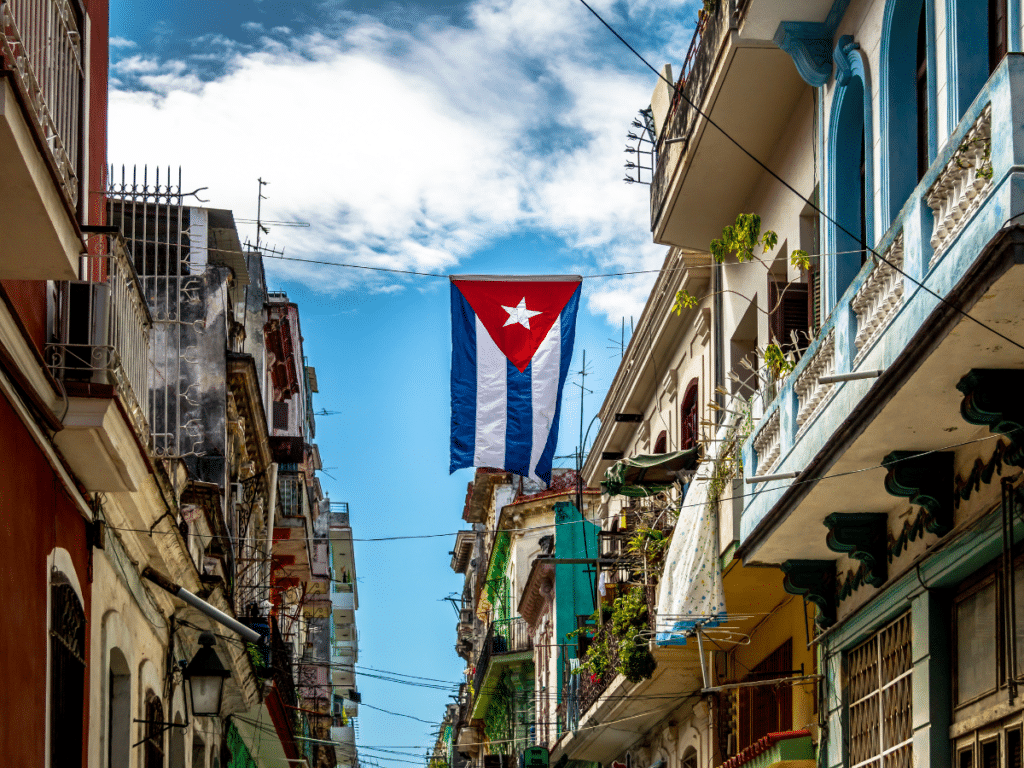
This post contains affiliate links that may reward me monetarily or otherwise when you use them to make qualifying purchases – at no cost to you. As an Amazon Associate, I earn from qualifying purchases. For more information, please read our disclosure policy .
What Are Cuba’s Entry Requirements?
In order to enter Cuba, all travelers must meet the following requirements. While most of these requirements don’t require too much preparation or forethought, it’s important to be aware of these entry requirements for Cuba and prepare for them.
- A Valid Passport
- A Cuban Tourist Visa (also known as a Cuban Tourist Card )
- Comprehensive Travel Insurance
- A Completed D’Viajeros Travel Form
There are certain exceptions to this list for Cuban-born and Cuban-resident travelers. Travelers who were born in Cuba or who are Cuban permanent residents do not need a tourist visa. Cuban-resident travelers don’t need comprehensive travel insurance, though Cuban-born travelers may.
Health Requirements for Entry to Cuba
Cuba no longer has outstanding entry requirements related to the pandemic and no longer requires any testing or vaccination before arriving in the country. When you complete the D’Viajeros Travel Form required before you’re arrival, you’ll note that the form asks about vaccination status. However, vaccination is not required to enter the country.
Cuba Travel 101
- Currency in Cuba: A Local’s Guide for Travelers
- How to Get Wifi in Cuba [Updated!]
- Is Cuba Safe? Updated Cuba Safety Guide
- Ultimate Cuba Travel Guide – A Local’s Advice for Travelers
Cuba Entry Requirements
The current entry requirements for Cuba are straightforward. However, there are steps that you must take to prepare in advance. With this in mind, it’s extremely important to be aware of all the details of the Cuba entry requirements before touching down on the island.
Let’s look at the entry requirements for Cuba in more detail.
1. A Valid Passport
Having a valid passport is the most straightforward requirement for entering Cuba. Keep in mind that your passport must have at least six months of validity when you arrive on the island. If your passport has less than six months of validity upon your arrival, you may be denied entry to the country.
2. A Cuban Tourist Visa / Cuban Tourist Card
Everyone visiting Cuba who is not Cuban-born or a permanent resident of Cuba needs to present a Cuban tourist visa upon arrival in the country. Don’t worry – getting a Cuban tourist visa, which is also known as a Cuban tourist card , is a straightforward process that you even complete on the day of your arrival if you’re pinched for time.
Most travelers purchase their Cuban tourist visa at the airport prior to departing on their flight to Cuba. For travelers arriving on a flight from the United States, tourist cards cost between $50-100 and are pink, while travelers arriving on flights from most other countries will get a green tourist card that usually costs around $25-40.
If you have a bit more time and want to streamline the process, you can also use a service like EasyTouristVisa to order your Cuban tourist visa in advance. EasyTouristVisa will ship the Cuban tourist visa directly to your home prior to your departure to Cuba.
Make sure to check out our extensive guides should you need any further clarity on Cuban tourist visas and tourist cards:
- A Traveler’s Guide to Cuban Tourist Visas
- A Traveler’s Guide to Cuban Tourist Cards
Travelers from a select few African and Asian countries will need to apply for a Cuban tourist visa before arriving in the country – make sure to check with the Cuban embassy in your country before you travel if you are unsure about the rules of entry from your country of origin.
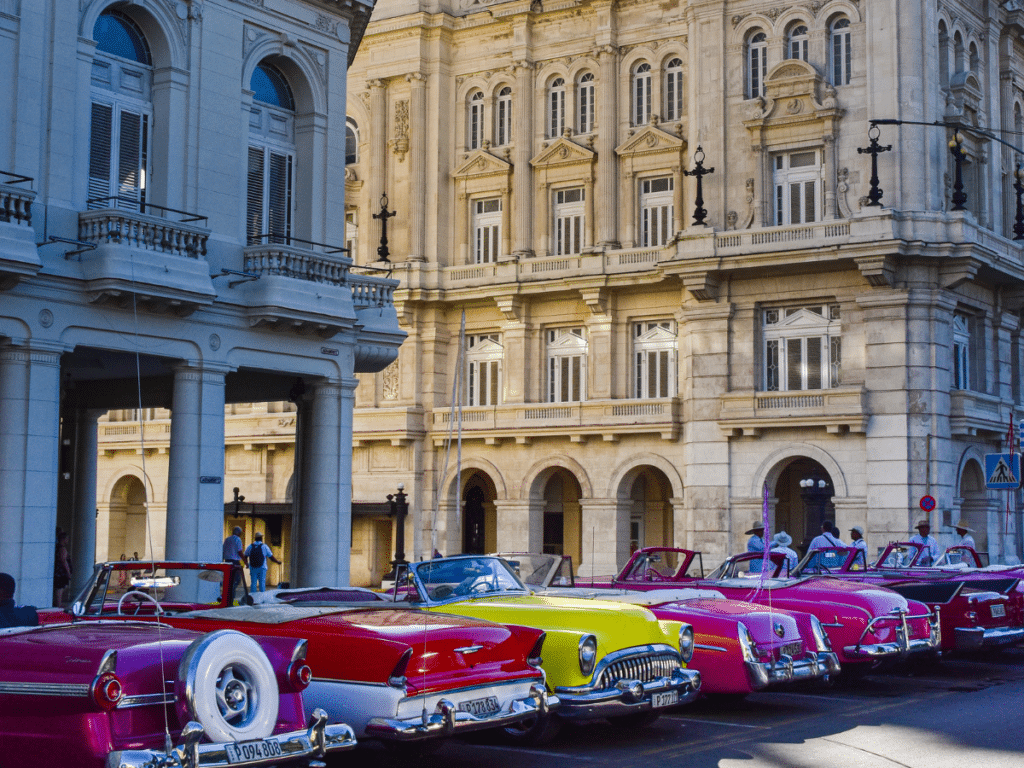
3. Comprehensive Travel Insurance
One of the most important Cuba entry requirements is comprehensive health insurance that would cover a traveler in the case of a health emergency during their stay in Cuba. This is the entry requirement for Cuba that requires the most forethought, as shopping for and purchasing a travel insurance policy valid in Cuba can be more challenging than you might think.
The vast majority of travel insurance companies do NOT cover travel to Cuba , meaning that even if you have a blanket travel insurance plan, it likely won’t cover you in Cuba. This is particularly true for travelers from the U.S. who are traveling to Cuba – even fewer companies cover U.S. travelers.
We always recommend traveling with Visitors Coverage (though this company doesn’t cover travelers from certain U.S. states) or Insubuy , which covers travelers from every U.S. state and most other countries.
You need to carry proof of comprehensive health insurance coverage when entering the country – make sure to check out our guide to travel insurance coverage for Cuba for more details.
Many times, proof of insurance coverage isn’t specifically requested by immigration authorities when they stamp your passport, but you must have it. If you don’t have proof of coverage, you may be made to purchase a plan at the airport – at the cost immigration officials see fit.
Read More: Ultimate Guide to Travel Insurance for Cuba
4. A Completed D’Viajeros Travel Form
In 2023, completion of the D’Viajeros Travel Form formally became a requirement for travelers entering Cuba. This straightforward online form can be completed up to 48 hours before your arrival in Cuba but is a requirement for travelers before arriving on the island.
The form usually takes less than ten minutes to complete and covers basic information like passport number, flight information, and information for customs.
Once the form is completed, save the PDF form it generates to present to immigration when you enter the country. You can print the form or save it in a digital wallet – either version is accepted.
Read More: A Traveler’s Guide to the D’Viajeros Travel Form for Cuba
Plan a Trip to Cuba
- 47+ Best Things To Do in Havana
- Ultimate Havana Travel Guide
- 12 Best Beaches in Cuba
Cuba Entry Requirements for U.S. Travelers
U.S. travelers don’t have any additional entry requirements for Cuba. Travelers from the United States need to have a valid passport, Cuban tourist visa, comprehensive travel insurance for Cuba, and a completed D’Viajeros Travel Form, just as any other travel would.
Remember, limitations on U.S. travelers in Cuba (like restrictions about staying in specific hotels or how you can spend your money on the island) come entirely from the government of the United States, not the government of Cuba. Once you’re on the island, you’re seen in the eyes of the Cuban government as you would be if you were from Canada, the United Kingdom, or any other foreign country.
Looking for some more clarity on travel to Cuba from the United States? We have plenty of guides about that! Check them out here:
- Can Americans Travel to Cuba?
- Support for the Cuban People Guide – Legal Travel Guide to Cuba

Carley Rojas Avila
Carley Rojas Avila is a bilingual travel writer, editor, content marketer, and the founder of the digital travel publications Home to Havana and Explorers Away. She is a serial expat and traveler, having visited 40+ countries and counting. Carley has written for publications like Travel + Leisure, MSN, Associated Press, Weather Channel, Wealth of Geeks, and more. Find her front row at a Bad Bunny concert, befriending street cats, and taste-testing every pizza in Havana.
Protect Your Trip »
How to Travel to Cuba
Since President Barack Obama announced that the U.S. would ease diplomatic relations with Cuba, the number of people looking to travel to the largest country in the Caribbean has steeply risen. Travel websites like Tripping.com , a vacation rental search engine, saw a 126 percent increase in searches for Cuban properties. Meanwhile, hotel search engine Trivago.com reported a 180 percent search surge since the Dec. 17 announcement.
The country already welcomes a large amount of tourism from other parts of the world, and even before the news, American interest in traveling to Cuba has steadily risen. According to data released by the Cuban government, more than 2.8 million tourists visited in 2013, about 92,000 of which were U.S. citizens. That number is up from only about 40,000 in 2008.
There are still a lot of unanswered questions about how the recent decision will affect Americans traveling in Cuba, but there are reasons to be optimistic — or even book a trip.
See: 5 Reasons to Travel More in 2015
If you dream of soaking up the sun on a Cuban beach or exploring Havana's distinct architecture on your own, you may have to wait a little longer. Even with the eased sanctions and the ongoing process of normalizing diplomatic relations, general travel and tourism is still prohibited. Congressional authorization is required to completely lift the tourism ban on Cuba, and it's uncertain if that will happen in the near future.
So, can you currently travel to Cuba? The answer is yes, but only with the proper license. Here's where it gets a little tricky: Technically, traveling to Cuba isn't illegal, but once you've arrived, it is illegal to spend money without a license because of the existing embargo. To obtain a license, individuals and travel providers must prove their trip complies with the Office of Foreign Assets Control's approved travel transactions.
If you want to explore Cuba legally, you'll have to sign up for a "people-to-people" tour. First authorized in 2011, these trips include certain educational and religious activities.
"It's not about mojitos, cigars and beaches," said Steve Born, vice president of marketing for Globus family of brands , a company that operates tours to Cuba. "It's more about the residents of Cuba and what their day-to-day life is, and the art and the history."
Though people-to-people tours have been permitted since 2011, the recent changes announced by President Obama expand the general license for travel to facilitate more cultural exchanges with the Cuban people. Authorized trips now incorporate humanitarian work, support for the Cuban people (including human rights aid), information distribution, private foundation activities, clinics and workshops, and public performances, including athletic and other competitions.
See: 3 Tips for Traveling When You Don't the Language
Other aspects of the proposed eased sanctions are encouraging to U.S. travelers and are likely to be implemented when the OFAC releases new guidelines, which may take a few months.
The new regulations will allow American citizens to bring back as much as $400 worth of goods for personal use. This includes up to $100 combined worth of alcohol and tobacco products — making the highly sought-after Cuban cigars more obtainable than ever before.
"Before, the only souvenir that an American could keep after traveling to Cuba was the stamp in their passport," said Elmer Castillo, Cuban-born owner of the tour company, In Touch with Cuba . Castillo points out that bringing back souvenirs benefits both Americans and Cubans, "They could bring back some souvenirs that are handmade by locals and that's another way to support their civil society."
U.S. citizens will also be able to use their debit and credit cards in Cuba.
"Prior to that you had to carry all the cash that you need, and once that was gone that was gone, so using debit cards is really nice to ease the inconvenience," Born said.
Your best bet (and the only legal option) is to book a trip through a licensed tour operator, such as Abercrombie & Kent , Smithsonian Journeys or Insight Cuba , among others. Tours, which can last anywhere from four days to two weeks and range in cost from about $2,000 to $6,000 per person must meet the people-to-people requirement. This is good news for those looking to soak up Cuban culture, but it doesn't necessarily mean you'll be spending your days lounging in a beach chair.
You should also keep in mind that if you're looking for a luxurious experience, you won't find it here: According to Bill Abbott, founder and president of Wilderness Travel , which offers small ship cruise tours of the island, a lot of Cuban hotels and home stays don't offer air conditioning. "You have to be flexible and enjoy the experience for what it is," Abbott said.
You'll have to disconnect, too: According to information released by the White House, Cuba has one of the lowest Internet penetration rates in the world, and although new U.S. policy aims to expand telecommunications in the country, don't expect to be picking up much Wi-Fi on your trip.
But in exchange for these modern comforts, you'll gain an interesting perspective into Cuban culture. "Cuba definitely lives up to this idea of a quirky little island lost in time," Abbott said. He recommends visiting the country before it becomes more modernized thanks to the influx of tourists. "There's a feeling that things are going to change soon," Abbott said.
Tours are highly organized, and the planned itineraries specialize in hands-on experiences and interactions with locals, such as jazz musicians or skilled artisans. Travelers' schedules are packed with dance performances, discussions of Cuban folklore and even insight into the country's vintage car culture.
These organized trips aim to foster conversations and create understanding about the differences and similarities between the two countries. Tour operators say the Cuban people welcome the changes and opportunities to show their heritage to U.S. citizens.
"Cuba has the potential to be the nicest touristic spot in the Caribbean because of its culture, the hospitality and mainly because of its people," Castillo said. "The future is not only dependent on the American side, whether or not the embargo is lifted, but how the Cuban side moves forward with [its] own regulations."
See: Your Travel Insurance Questions Answered
About the author: Gwen Shearman is an intern for the Travel section at U.S. News. You can follow her on Twitter , connect with her on LinkedIn or email her at [email protected] .
World's Best Places To Visit
- # 1 South Island, New Zealand
- # 4 Bora Bora
If you make a purchase from our site, we may earn a commission. This does not affect the quality or independence of our editorial content.
You May Also Like
The best pearl harbor tours.
John Rodwan and Amanda Norcross April 9, 2024

The Best Pigeon Forge Dinner Shows
Korrin Bishop April 9, 2024

Flight Canceled or Delayed? What to Do
Amanda Norcross April 8, 2024

Carry-on Luggage Sizes by Airline

The Best Charleston Tours
John Rodwan April 4, 2024

The Best Napa Valley Wine Tours
Amanda Norcross April 4, 2024

The 10 Best Denver Tours
Lyn Mettler April 4, 2024

Top Memorial Day Weekend Getaways
Nicola Wood April 3, 2024

The Best Way to Renew a Passport
Amanda Norcross April 3, 2024

The Best Checked Luggage
Erin Evans , Rachael Hood , Catriona Kendall , Sharael Kolberg , Amanda Norcross and Leilani Osmundson April 3, 2024


Cuba Travel Guide for U.S. Citizens: What to Know Before You Go (Updated 2023)
Feb 3, 2023 | Caribbean , Destinations | 0 comments

Planning this trip to Cuba was the most challenging thing I’ve done to date in the name of travel. Out of all 26 countries, thousands of miles, from 5 years of traveling the world.
Once we landed in Havana, I knew that this place was unlike any I’d visited before.
Had I allowed the logistical challenge of traveling to Cuba as a US citizen deter me from visiting this country, it would have been my greatest mistake.
This Cuba travel guide for US citizens is up to date as of early 2023, based on my experience traveling to Cuba in December 2022.
In this post, I will cover Cuba travel FAQ and share how to visit Cuba legally as a US citizen or from a US airport.
Before you read, please note that there are sanctions from the U.S. government that restrict travel to Cuba.
It is the responsibility of each visitor to follow all laws and regulations, at home and abroad.
This website has a limitation of liability policy that applies to all posts, which you can read here .
This post contains affiliate links. See more in the disclaimer .
Can Americans Travel to Cuba?
Yes. And you can even do so independently.
The key is to visit legally, within the confines of OFAC (Office of Foreign Asset Control) regulations due to the embargo and sanctions.
IMPORTANT: These regulations also apply to non-US citizens that are departing from a US airport.

How to Travel to Cuba Legally
There are 12 categories of legal travel to Cuba under OFAC:
- Family visits
- Official business of the U.S. government, foreign governments, and certain intergovernmental organizations
- Journalistic activity
- Professional research and professional meetings
- Educational activities
- Religious activities
- Athletic competitions by amateur or semi-professional athletes or athletic teams
- Support for the Cuban People
- Humanitarian projects
- Activities of private foundations or research or educational institutes
- Exportation, importation, or transmission of information or information materials
- Certain authorized export transactions
Source: U.S. Department of the Treasury
The most common is Support for the Cuban People, which requires the following:
§ 515.574 Support for the Cuban People. (a) General license. The travel-related transactions set forth in § 515.560(c) and other transactions that are intended to provide support for the Cuban people are authorized, provided that: (1) The activities are of: (i) Recognized human rights organizations; (ii) Independent organizations designed to promote a rapid, peaceful transition to democracy; or (iii) Individuals and non-governmental organizations that promote independent activity intended to strengthen civil society in Cuba; and (2) Each traveler engages in a full-time schedule of activities that: (i) Enhance contact with the Cuban people, support civil society in Cuba, or promote the Cuban people’s independence from Cuban authorities; and (ii) Result in meaningful interaction with individuals in Cuba. (3) The traveler’s schedule of activities does not include free time or recreation in excess of that consistent with a full-time schedule. Source: Code of Federal Regulations
It will not be a vacation where you go to the beach and prop your feet up, buy things wherever you want, and stay wherever you want.
You must have a full-time schedule of activities that result in meaningful engagement with Cubans.
For us, that looked like many, many art tours and private gallery visits where we connected with local artists and had countless meaningful, deep conversations.
No topic was off-limits.
Everyone opened up (including us) and shared our passions, life experiences, opinions, and learned about one another. And yes, we talked about politics.
We were on the go, all day, every day.
And we didn’t really spend time with other foreigners. We crossed paths with foreigners a couple times, but everyone else we spoke to and spent time with was Cuban.

Casas particulares and paladares
Aside from your full-time schedule, you should also stay in casas particulares and eat at paladares.
A casa particular is a room in someone’s house. It’s been a normal way to travel in Cuba for years. There’s an infrastructure around it. You can find them on Airbnb.
We highly recommend this casa particular in Havana and this casa particular in Viñales.
Paladares are privately-owned small restaurants. Download A La Mesa for a list of restaurants all over the country. Each listing shows if it’s privately-owned.
The app also works offline, which will make your life much easier in Cuba.
Pro tip: If you’re also a vegetarian, make sure you try Camino al Sol ! It’s an all-vegetarian paladar in Havana.

What you are banned from doing in Cuba
You cannot spend money in OR interact with any of the places on this list from the US Treasury Department.
Many are hotels, so pay attention!
I copied and pasted these into a list to have on my phone, then accessed it offline while in Cuba to ensure there wouldn’t be any issues.
Is Cuba safe to visit?
Absolutely.
As a young woman who visited 25 countries before going to Cuba, I’ve been in a few…sticky situations. Cuba was amazing.
I never worried about being robbed and just felt at ease the entire time I was there. I tend to be a more anxious person, so that’s new for me.
This is my personal experience and I was not in Cuba as a solo female traveler, so yours could be different.
Is Cuba open for travel right now?
As of late 2022, visitors no longer need to show proof of Covid-19 vaccination or testing before entering Cuba. We brought our vaccine cards just in case, but no one asked to see them.
Please refer to this government site for updated information before your visit.
On our way back to the United States, we did have to share contact tracing information with our airlines using a form before we could check in. It was quick and easy.
Although many online sources claim masks are mandatory in certain settings, we did not see any places where masks were required in December 2022.

Accessing Money in Cuba: 2023 Updates
Everything you need to spend in Cuba must be in cash.
Because of the sanctions, your credit and debit cards will not work in Cuba.
If you try to use them, your bank will probably lock your account and it will take a lot of effort to get it unlocked.
In prior years, you would need to convert money to Cuban pesos before using it. Euros were the best to have because CADECA (the government exchange houses) charged a higher fee on USD exchanges.
As of late 2022, everywhere we went accepted U.S. dollars as payment. This was highly unexpected and deviated from every piece of advice I read online before leaving for Cuba.
However, it is still good to have some pesos for a fairer exchange rate. Some menu exchange rates were awful.
When we were in Cuba, we typically got 150 CUP for 1 USD. The CADECA rate was 110.40 CUP for 1 USD.
We exchanged money at our first casa particular and spent USD on activities, private taxis, and one of our casas. We usually spent pesos on art, food, and coffee.
Make sure you get cash in plenty of small bills. Twenties, tens, fives, and ones were useful. Anything larger than that will be annoying to deal with.
If your bank will only give you large bills, go to Publix and ask the customer service to break them when they’re not busy. Works like a charm!

Is it safe to exchange money on the street in Cuba?
You will be offered money exchange on the street wherever you go in Cuba. Just say “No, gracias,” and move on.
As a general rule of thumb, it is not safe or advised to exchange money on the street. This goes for wherever you are in the world.
The main reason it’s unwise to do this is forged currency. If it came from some random person, it may be counterfeit.
A local friend taught us how to know your Cuban pesos are real. Hold the bill up to the sun, and check the watermark.
The watermark will have a number on it, and that number must match the value of the bill.
If it’s a 100-peso bill, the number in the watermark should say 100.
Again, I do not recommend exchanging money in the street. We didn’t on this trip because we were able to get pesos from the front desk of our casa particular.
If you’re ever concerned about any bills you were given as change, use the tip from our friend for some peace of mind.
I also want to make it clear that we were never given counterfeit bills as change while in Cuba, but these things can happen anywhere.
You’re more vulnerable as a foreigner, because you don’t know exactly how the money is supposed to look.

Getting WiFi in Cuba
If a travel guide says there are only one-hour WiFi cards, it is outdated.
Now, you can access WiFi on a one-hour or a five-hour card.
WiFi is now cheaper in Cuba—it was $5 USD per hour; now, it’s $1 USD per hour.
We only needed one 5-hour card per person for the whole week.
Instead of waiting in the ETECSA line, we bought them from our first casa particular .
Overall, our Cuba WiFi experience was much easier than what we expected.
Don’t expect to be online all the time, but WiFi access is not as difficult as prior years.
Pro tip: The two main apps I highly recommend to download BEFORE you leave for Cuba are A La Mesa and Maps.me . Both work well offline and will save you such a headache.
On Maps.me specifically, also download the maps of each city/town you will visit in Cuba. In our case, I downloaded the maps for Havana and Viñales. When you have Internet access, put your casa particular addresses in a Note on your phone, so you copy and paste them into Maps.me whenever you need to. Same goes for any attractions you know you want to see.
If you want (and if your phone is unlocked), you could get a Cuba sim card, which comes with data. I don’t see the point for a one-week trip, but to each their own.
You can reserve those online in advance from Suena and pick them up at the José Martí airport (in Havana). If you go this route, you want the Tourist SIM Card from the top menu.

Can you drink the water in Cuba?
In short, no.
There was bottled water for sale everywhere on our trip in December 2022, but I read online before leaving that you can’t bank on that.
Instead, I bought this LifeStraw to have filtered water and it was the best travel purchase I’ve made. Ever.
Our Viñales casa particular hostess took one look at that bottle and pointed me to her giant drinking water spigot for us to have freely.
She was already familiar with the water situation for foreigners and told me it was smart to bring a reusable filtered bottle.
Highly recommend one of these !

Can you check in online for flights to Cuba?
There are too many documents the airlines must verify before they can issue a boarding pass.
You will also need a paper boarding pass for your Cuban health insurance, often included in your departure airfare.
Do you need to speak Spanish to visit Cuba?
Out of all Spanish-speaking countries I’ve visited, Cuba is the main one you need at least some language skills to visit.
There are people who speak English, especially young people, but it is not the norm.
If you don’t speak Spanish and you’re not traveling with a friend who does, download Google Translate for offline use before you arrive.
It won’t be ideal, but it will work when you need language help.
The best advice I can give is to travel with someone who speaks Spanish fluently. My best friend said many times while we were in Cuba that she would be toast without my language skills.

Can I bring Cuban cigars and rum back into the USA as souvenirs?
The answer used to be yes, as long as you purchased them from a private shop instead of a stated-owned one.
That answer is no longer the case, as of late 2022.
Now, you cannot bring any rum or cigars into the USA from Cuba, no matter how small the amount is or where they were purchased within Cuba.
When you arrive back into the USA, Customs and Border Patrol will ask if you have any rum or cigars. If you do, assume they will be confiscated.
What to Pack for Your Cuba Trip
I pack carry-on only and found Cuba to be one of the easier countries to pack for. The climate in December was perfect, with 80s in the day and 60s-70s at night.
Here is a short packing list of the things you need before going to Cuba:
- Mosquito repellent, because the insects in Cuba will eat you alive (I use these .)
- Comfortable shoes for lots of walking
- Cardigan or light sweatshirt
- Flowy/comfortable clothes (You can see one of the outfits I packed below.)
- One active wear outfit for hiking/horseback or bike riding (if you’re going to Viñales)

I hope this Cuba travel FAQ was helpful for you. I know how stressful it can be to figure out what to do when planning. If you have any questions, comment below and I’ll do what I can to help!
Read more Cuba travel guides:
- Cuba Pre-Departure Checklist
- What to See and Do in Cuba (Havana and Viñales)
- At Dusk in Havana, I Fell in Love
- Havana, the Art Sanctuary
- When It Destroys, It Starts with Us
- The Elephant in the Room: Socialism in Cuba
Save on Pinterest

Share this:
- Click to share on Facebook (Opens in new window)
- Click to share on Twitter (Opens in new window)
- Click to share on Pinterest (Opens in new window)
- Click to share on Reddit (Opens in new window)
Leave a Reply Cancel reply
Hi, I'm Sarah

Welcome to my oasis! I am a writer and budding entrepreneur with a love for caffeine, capital gains, and seeing the world. If I'm not writing, you can find me reading a good book, trying out a new vegan recipe, or adding to my coffee mug collection. My goal in life? To see every country in the world. Come along for the ride!
Choose your language
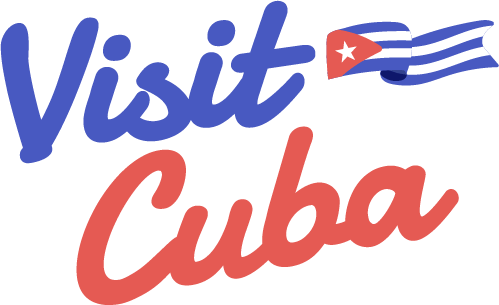
Welcome to Cuba
More than you imagined
Plan your holiday to Cuba
Cuba Up-Close
Six Essential Tips for Your Trip to Cuba 2022
From alternative accommodation to bypassing the restrictive internet in Cuba, check out these six essential tips for your trip to Cuba.
Cuba up-close
When is the best time to visit Cuba?
Planning a visit to Cuba? The island offers sunny skies and activities year-round. Learn more about its seasons, weather, and cultural calendar.
Is it safe to travel to Cuba?
Here are some of the best safety tips to follow as you enjoy your trip, and use public transportation in Cuba.

Greatest Waterfalls in Cuba
Imagine finding yourself in Cuba, surrounded by an exuberant natural environment - where the vivacious green mountains stretch out into a splendid blue sky - while the fresh Caribbean seabreeze brightens your face. And on this tropical voyage, you discover a land of waterfalls on every corner of the island.
El Nicho waterfall, Sierra de Escambray
Photo: Shutterstock
Looking for some cool things to do?
Havana’s national museum of fine arts.
Your essential guide to one of Cuba’s most fascinating cultural
Sip and Dance Your Way Through Trinidad’s Nightlife
Things To DoSip and Dance Your Way Through Trinidad's Nightlife
La Casa del Ché: The Home of Ché Guevara
Discover Ché Guevara's life & legacy at Casa del Ché
Step Back in Time at Finca Vigía – Hemingway’s Home in Cuba
Visit the Ernest Hemingway home in Cuba that attracts followers
Five of the Most Instagrammable Cafes in Havana
Havana is full of gems to start your morning on
Dance to Your Own Beat at Havana World Music 2022
Havana World Music: Are you ready to break beyond the
Five Cuban Clothing Brands to Shop for in Havana
Take a look at the emerging Cuban dress wear brands
LGBTQ+ Nightlife: Six Gay-Friendly Venues to Visit in Havana
Havana's LGBTQ+ scene is livelier than ever! Check out these
When Is the Best Time to Visit Cuba?
Planning a visit to Cuba? The island offers sunny skies
Where to Drink in Havana: Our Essential List of the Best Bars
Explore our essential list of the best bars in Cuba,
Top Four Jazz Clubs in Havana
Cuba’s capital has always enjoyed a lively jazz scene, and has produced legendary musicians. It’s time to visit Havana’s best jazz clubs!
La Zorra Y El Cuervo jazz club, Vedado, Havana
Photo: Alamy
Winter activities and tips!
History & Heritage
Visit the Museo de la Revolución
Wildlife & Nature
Ciénaga de Zapata
Castillo del Morro
Beaches & Islands
Hit the Beach at Tarará
Tarará Beach – Havana’s Best Kept Secret
Tired of typical tourist spots? Get to know Tarará beach,
Castillo del Morro: A Historical Fortress in Havana
Learn about the History of Cuba in the bay of
Ciénaga de Zapata: A Natural Cuban Treasure
Encounter the endemic flora and fauna of Matanzas Cuba, and
Visit the Museo de la Revolución, and Relive the Fight for Cuba
Havana’s Museo de la Revolución offers a thorough look at
The Cuban Cigar: Everything You’ll need to know
Learn about the curious and mysterious history of the Cuban cigar, how a Habano is made, and where you can buy quality tobacco like Cohiba cigars.
A Cuban woman with a cigar, Havana
Check Us out on Instagram
@govisitcuba, subscribe to our newsletter.
Get more travel inspiration, tips and exclusive offers sent straight to your inbox
I would like to get Visit Cuba newsletters in my inbox
Paradise for Your Inbox
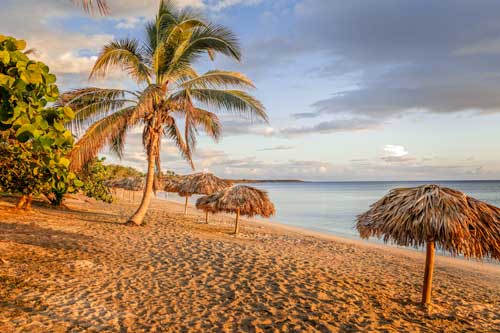

How to Spend Two Weeks in Cuba: An Itinerary for First-Time Visitors
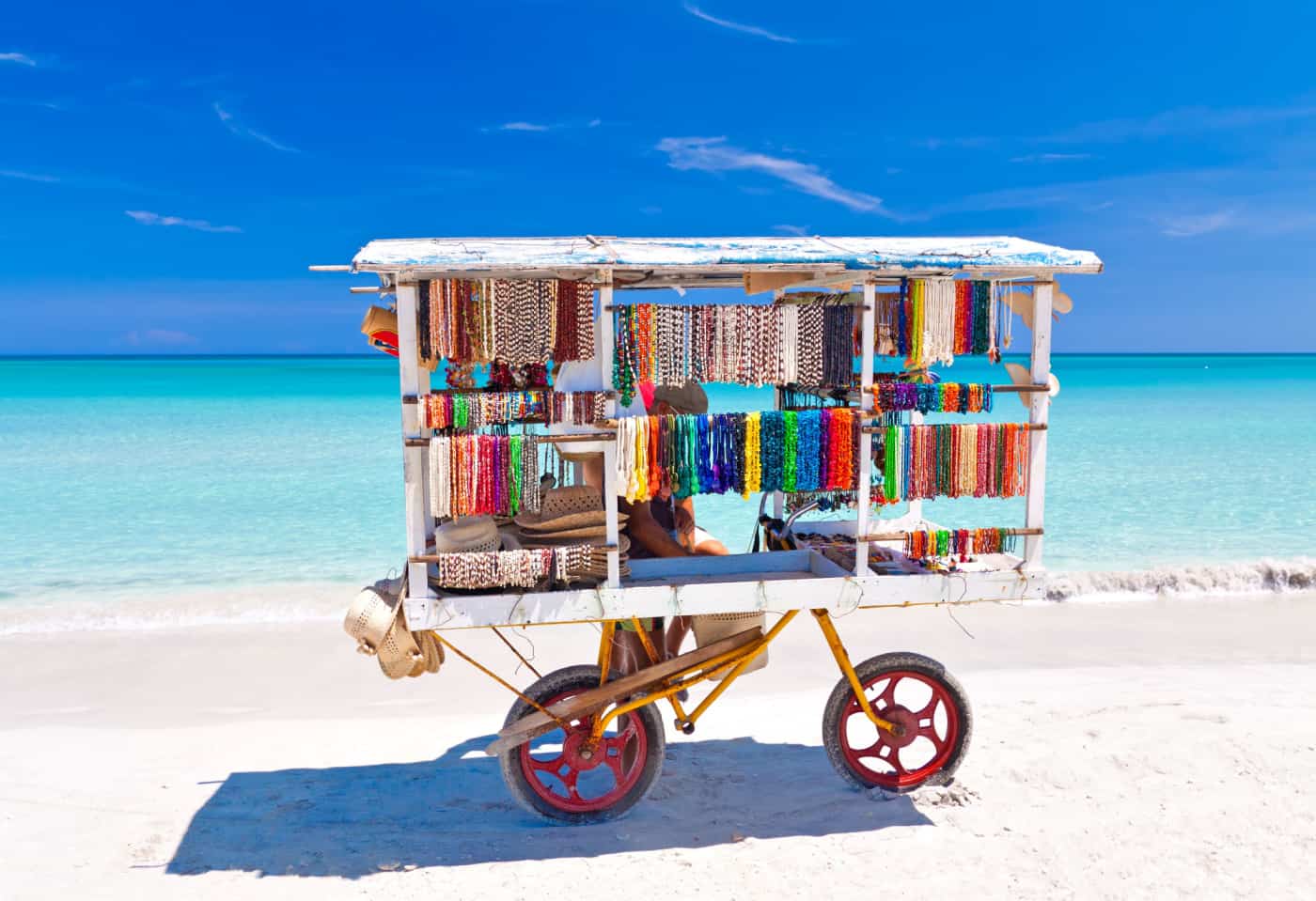
Cuba is entirely unique.
From the crumbling facades of Havana old town to the lush valley of Vinales and the pristine beaches of Varadero, there’s a lot to fit into two weeks in Cuba. You will fall in love with the salsa rhythms of the warm Caribbean evenings, find modern paladares with some amazing Cuban cuisine, and explore a surprisingly biodiverse country full of secret waterfalls and dense jungles.
But it’s the people of Cuba that are the most welcoming. Spending just 14 days in Cuba gives you a sense of an entirely unique culture that’s resourceful and resilient, but above all, happy. A turbulent history of revolution, communism and trade embargoes has given this island a ‘stuck-in-time’ feel that many of us in the Western world long for.
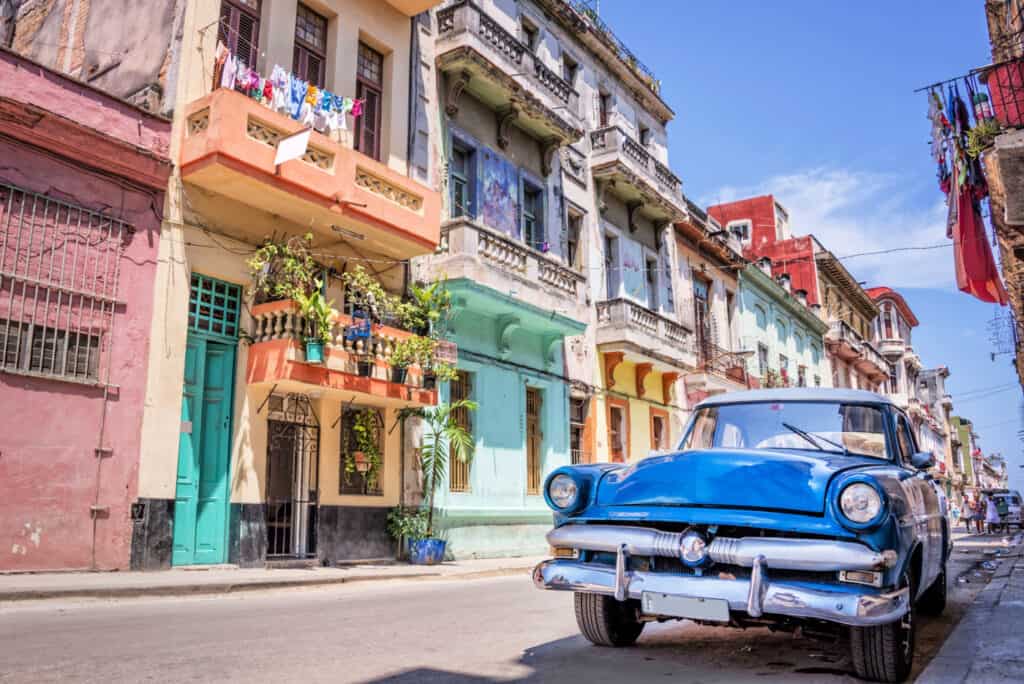
Getting Around in Cuba
Of course, it isn’t exactly a small country, and you couldn’t possibly fit everything into just two weeks in Cuba. Especially with the Cuban transport and road network being the way that it is. But if you focus on specific places that each show a different aspect, you can get a great insight into this wonderful country.
Cuba doesn’t have a fantastic rail infrastructure like Japan or the cheap overnight buses of South America . Getting anywhere takes a long time, it’s best to hire a local driver or book buses through a hotel if you’re traveling around Cuba for two weeks.
Rather than trying to fit a lot into your Cuba itinerary, enjoy spending a little time in each place. Of course, the slow pace of life does have its benefits; Ernest Hemingway came for a short visit and stayed twenty years!
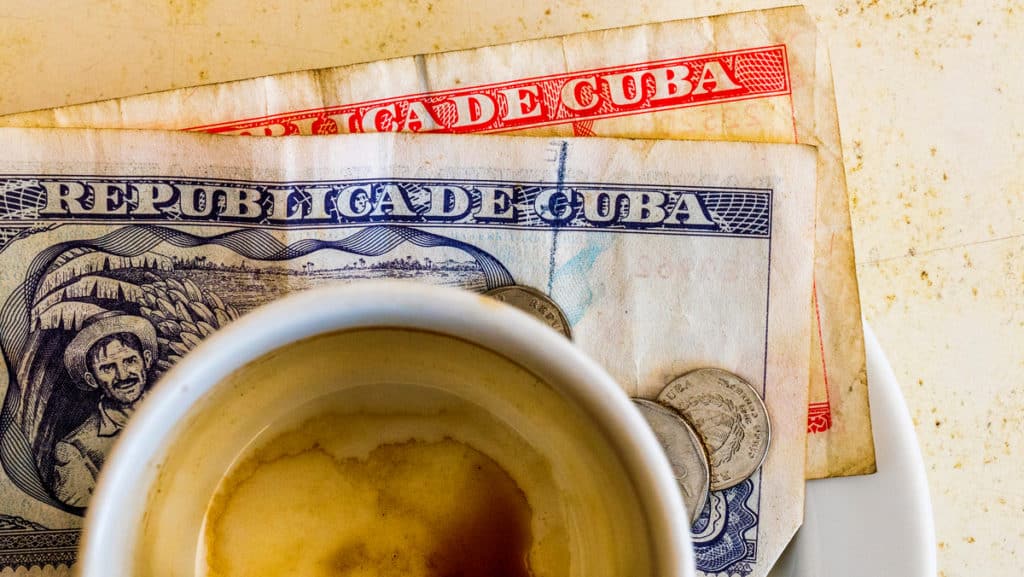
Money in Cuba
There used to be a tourist currency (CUC) and a local currency (CUP), but thankfully this confusing system has been phased out by the government leaving just Cuban pesos as the sole currency. You can’t buy Cuban currency outside of the country or with an American bank account so make sure to take enough cash to exchange. ATM’s can be found in the cities, but are few and far between in remote areas and in various states of disrepair. Cards are not widely accepted either due to the lack of reliable internet connections. I have a detailed guide to travel costs in Cuba if you’re keen to read more.
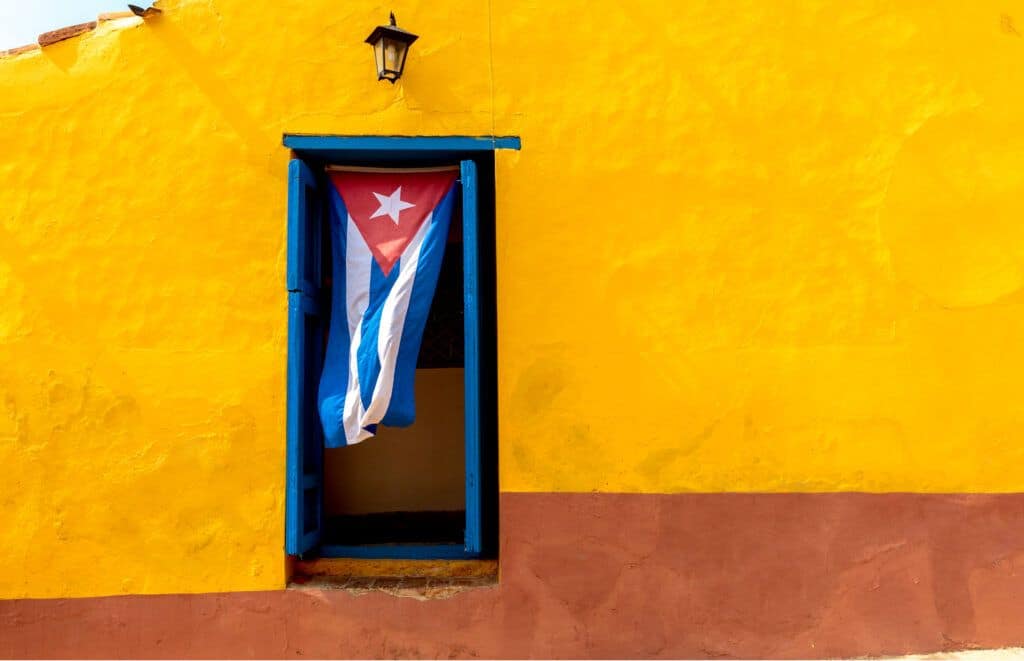
How to Spend Two Weeks in Cuba
Our Cuba itinerary starts with 3 nights in Havana, then heads out to cigar country in Viñales for a 3-night stay. We then spend 2 nights in Cienfuegos, 2 nights in Trinidad, and take time out with a 3-night beach retreat at Varadero. Finishing with the last night in Havana, to ensure we can easily make it back to the airport on time!
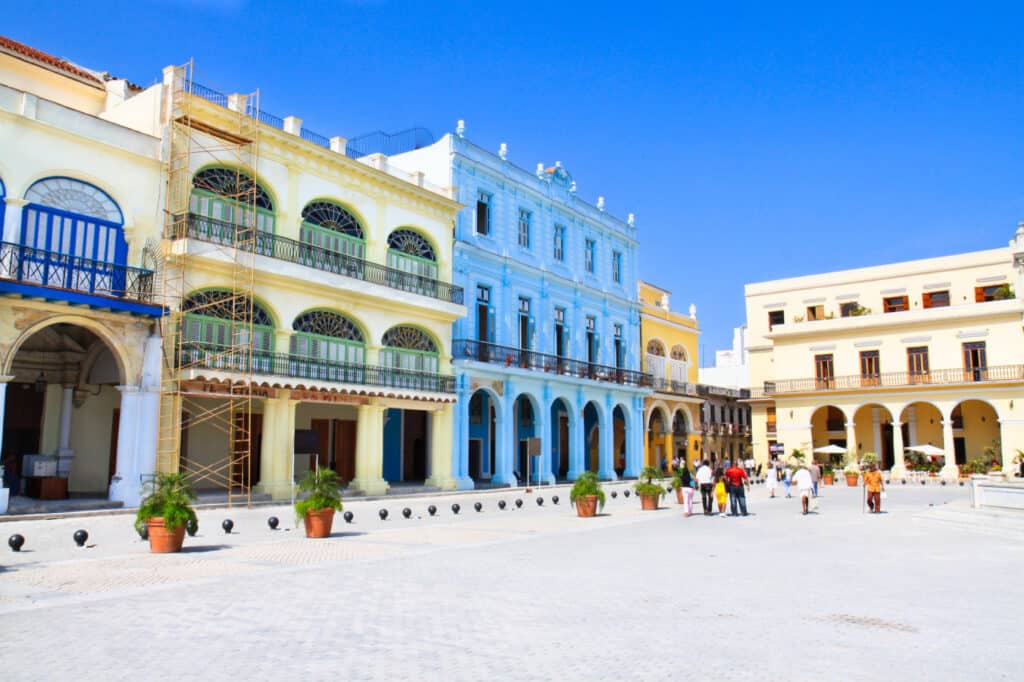
Day One: Arrive in Havana and Acclimatize
Cuba can be a bit of a culture shock. Even if you’re an accomplished traveler, Cuba has unique oddities that separate it from the rest of the world. Firstly, say goodbye to being connected 24/7, or maybe even at all.
Although there is some Wi-Fi in big hotels (like Hotel Inglaterra in Havana), the rest of the country remains disconnected. Wi-Fi hotspots in places like Vinales see crowds of teens huddled around them, desperate to stay updated with the outside world.
So, you can forget about getting any updates unless you want to relive the dial up speeds of the late ‘90s, but it does have its benefits. Cuba gives you a chance to disconnect from modern life and get back to seeing a place through your own eyes rather than distorted through a screen.
Spend the first day easing yourself into the pace of life in Havana. I recommend staying in the old town. It’s touristy, but it’s also close to everything. In my mind it’s not worth wasting time bartering with taxis or getting lost on public buses when you can stay right in the heart of it all.
Wander the cobblestone streets and head over to the old town square Plaza Vieja. Built in 1559 this square is full of the crumbling facades and colorful paintwork that make Havana so iconic. Pop up to Cámara Oscura for an unusual view of the city, then head over to retro 50’s bar La Vitrola for some of the best cocktails around. The food is a mix of Spanish tapas and traditional Cuban cuisine.
A great place to stay in the old town is Residencia Santa Clara . The rooftop terrace is great for evening drinks, with great views over the city. The hosts are wonderful, and they make you feel like you are part of the family.
The house itself is well designed, spacious and each room comes with a bathroom with a rainfall shower. I love that the hotel offers such a generous breakfast, and the coffee is super strong!
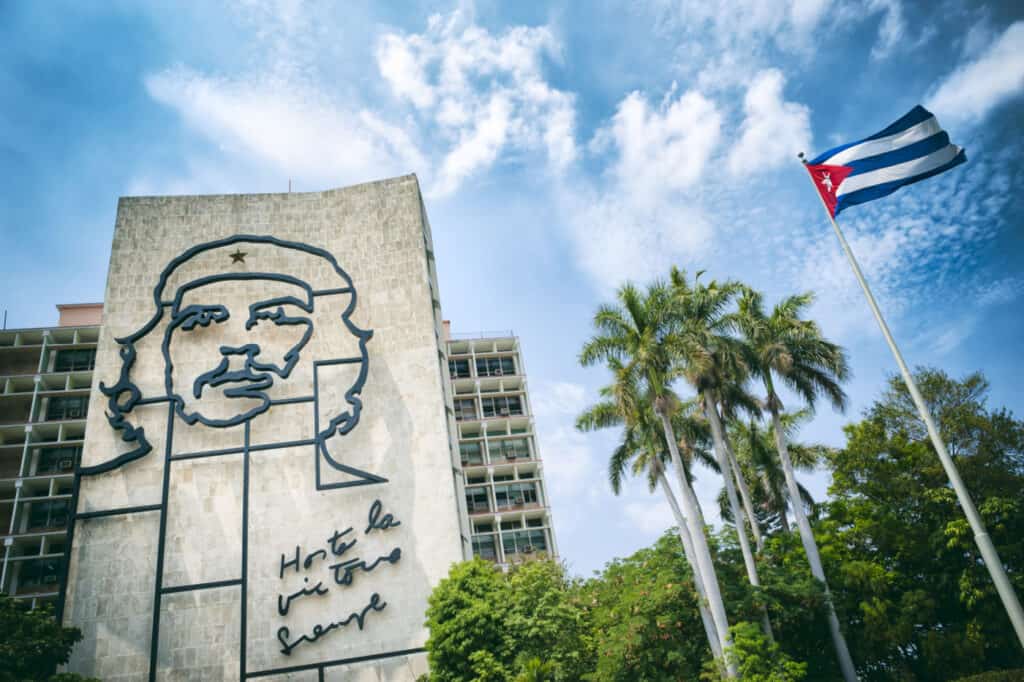
Day Two: See the Sights of Havana in a Vintage Car
A great way to get your bearings and fit in a lot of the more spread-out sights in Havana is by taking a classic car tour. Pick the best-looking vintage car from the parade at Parque Central and tour the city in style. And yes, my choice always is a bright, Barbie pink!
Seeing the city in the way easily beats the Havana hop-on-hop-off bus that’s also available in nearly every other capital city.
We were so enamored with our 1950’s Ford Thunderbird that we neglected to check that the driver could speak English on our second visit to Cuba. And so, my biggest tip here is that if you want an informative tour, always check your drivers spoken language and tour route before you hop in!
The driver will usually take you out to Vedado, past many beautiful colonial buildings and wide boulevards. A stop at Plaza de la Revolución is a must to grab snaps of the great monuments to the imposing revolutionaries of Cuba. These include the iconic portrait of Che Guevara, heroic guerrillero Camilo Cienfuegos, and the José Martí Memorial. The square serves as the base of the Cuban government and hosts large-scale political rallies and events like the pope’s famous visit.
You will also likely visit a small park with a familiar Liverpudlian seated on a bench. Although he never visited Cuba, John Lennon Park was created by the communist Cuban leader Fidel Castro as an ode to a “fellow dreamer”. There’s also a full-time security guard loitering around the bench, looking after Lennon’s iconic glasses.
Back at Parque Central you can’t miss the grand golden cupola of the National Capitol of Cuba. The whole area is full of baroque buildings that wow at every turn. Spend the evening next door, catching a show at the Grand Theater of Havana. The impressive architecture of the palatial theater built in 1838 is worth the entry fee alone.
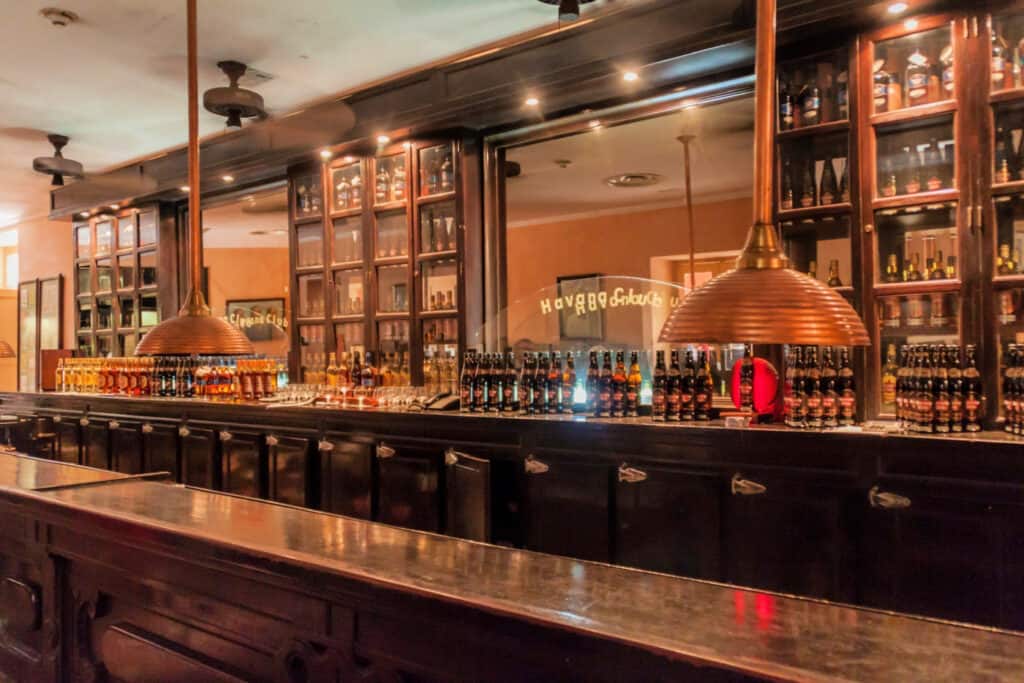
Day Three: Visit the Museums of Havana
For your third day in Havana, dig a little deeper by visiting some of the best museums in the city. The Museo Nacional de Bellas Artes holds some of the most important art in Cuba. There are 24 rooms with more than 45,000 works, there are also art pieces from the ancient world with collections from Rome, Greece, and Egypt.
Head over the road to El Floridita Bar for a quick refreshment at one of the most famous bars in the city, you might not get a table as this place gets super busy, but the interior is worth a look if you’re nearby.
Remaining on the drinks theme, Havana Club Museo Bar is the place to learn all about the globally exported tipple. Havana Club Rum is a big deal in Cuba, learn all about the rum-making process, from the sugar cane itself to a scale model factory. Tasters are usually free too!
You can also visit the Museum of the Revolution housed in the former presidential palace. This museum pays homage to the country’s greatest revolutionaries as well as Fidel Castro’s famous yacht. Another option that’s great for children is the Natural History Museum or ‘Museo Nacional de Historia Natural de Cuba’ located in the center of Havana at the Plaza de Armas. It’s full of natural wonders and a great place to learn about the diverse life on this island.
Spend the late afternoon climbing the bell towers at La Catedral de la Virgen María de la Concepción Inmaculada de La Habana. Get some great views over the city and explore one of the best churches in Havana. It’s advised to wear long pants as a mark of respect, or wraps are provided to cover bare legs.
Havana has some of the best food in Cuba, so don’t miss eating at one of the many great restaurants, or paladares, while you’re in the city. Try Ropa Vieja (shredded beef) at La Lluvia de Oro restaurant or for some of the best traditional Cuban cuisine visit Los Mercaderes.
For evening drinks there’s no better place than La Bodeguita Del Medio. It’s one of the most famous watering holes in Havana, with walls covered in messages and pictures of famous visitors. There’s only one thing to drink here, a mojito. A popular spot with the mint cocktail loving author, Ernest Hemmingway, this place is usually busy with tourists, but the music and the friendly staff always make everyone feel welcome.
Of course, for a real slice of Havana life, visit the Malecón at sunset. Spot couples out on a date, families taking an evening walk and businessmen on their way home from work. All walking along the promenade taking in the last sun kissed views of the city before nightfall.
You can arrange your onward travel by bus through a hotel or tourist information point or arrange a collectivo (share taxi) or private driver through your casa particular.
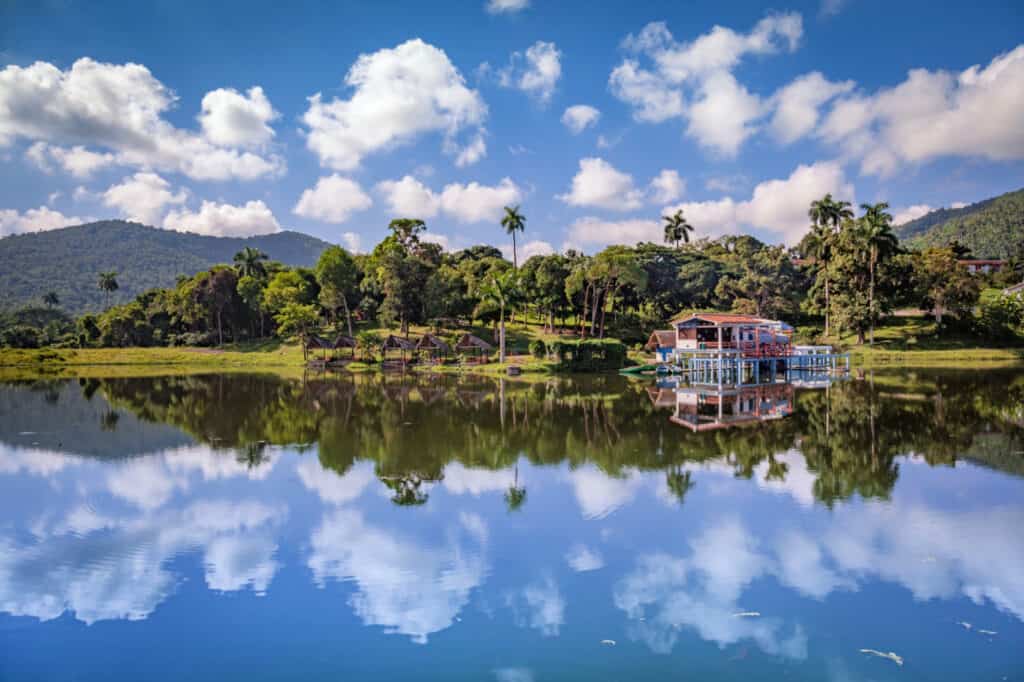
Day Four: Stop at Las Terrazas on the Way to Vinales
On the way to your next casa particular in Vinales, stop off at Las Terrazas. Started in 1968 as an ecotourism project, the area contains over half of Cuba’s native birds; it’s home to 117 species of birds in total, and 12 of them are endemic.
Fidel Castro enlisted Camilo Cienfuegos’s brother to build 1,360 kilometers of terraces to combat erosion, resulting in a self-sustaining community with roads, homes, and schools. Locals include an entire artist colony, who live and work in the area full time.
The community planted an astonishing seven million trees between 1968 and 1978. Then it was designated a Biosphere Reserve by UNESCO in 1984. It’s the perfect stop for lunch and a hike. Las Terrazas is located in the Artemisa province in the Sierra del Rosario mountains, on the way from Havana to Vinales.
Many tourists never stop here, but locals often visit Las Terrazas as a day trip from Havana. Visit community projects like the Aire Libre café, the Casa-Museo Polo Montañez and the Moka Hotel. There’s also Cuba’s first zipline, with six lines surrounding the local village, and horseback riding along the San Juan River.
If, like us, you love hiking, the Sierra del Rosario has some amazing options. Climb Taburete Mountain, visit the ruins of the San Ildefonso and El Contento coffee plantations, or take the easy six kilometer hike up to the Santa Serafina Coffee farm. It’s best to hire a local guide for all of these though, as the trails aren’t marked and it’s pretty easy to get lost!
Then travel onto your casa particular in Vinales to relax for the night. Stay in the heart of town to be close to everything. Casa Esperanza Tuta features air conditioning, private bathrooms, and mountain views. We loved the hosts – they went above and beyond to make our stay as comfortable as possible. And the continental breakfast, with locally grown fruit, is amazing.
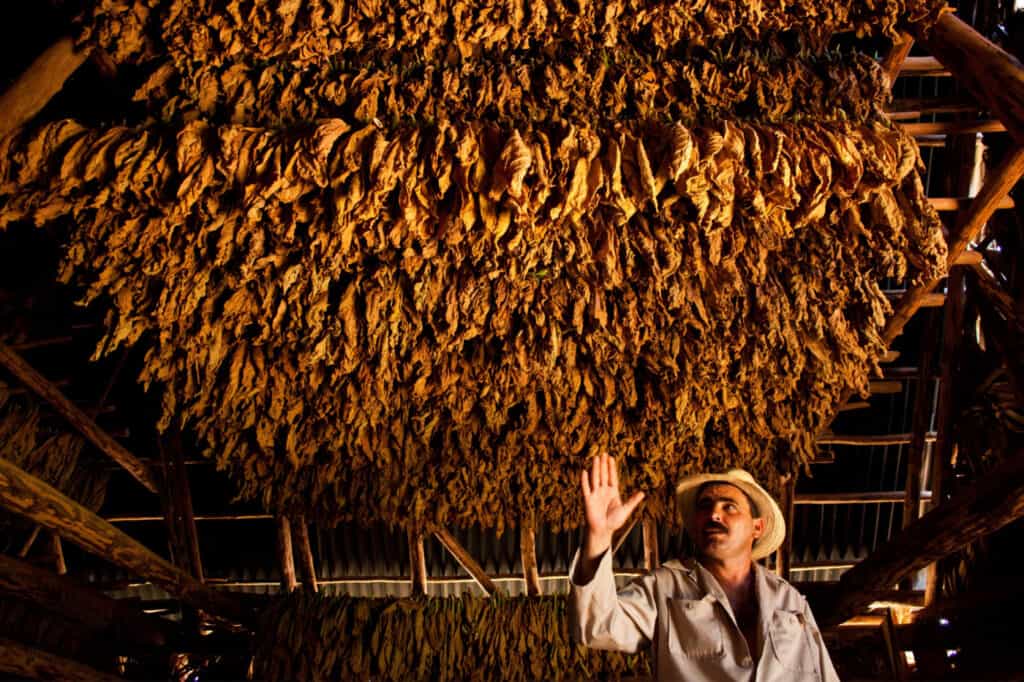
Day Five: Discover Where Real Cuban Cigars are Made
Vinales is a beautiful part of Cuba to visit, with its lush green valleys and large limestone outcrops. These towering cliff-like structures are known as mogotes, they can rise as high as 300 meters in this area and dominate the landscape.
Vinales is best known for its tobacco and coffee plantations, take a tour to find out how the locals grow, harvest, and produce these vital commodities. These aren’t the polished, flashy coffee tours of Costa Rica or the organized tours of coffee plantations in Colombia .
These tobacco and coffee tours are the real workers taking you around their farms. There’s usually a healthy amount of rum involved! And of course, at the end you have the chance to buy their products straight from the source (at heavily discounted prices, which I can highly recommend).
Avoid buying fake cigars from street sellers in places like the Malecon in Havana and get them here instead. Cuba is of course well known for its cigars, but if you’ve never tried the coffee be prepared for a kick! It’s some of the strongest coffee in the world.
A mixture of how the beans are grown and how the coffee is made makes for an intense caffeine hit. Even the most avid caffeine addict might get a shock from the strength of Cuban coffee.
In the afternoon hire a bike to explore Vinales, you can visit the nearby Mural de la Prehistoria and see the many beautiful views of the valley. Explore the backstreets and get a sense of the quiet country life in Cuba.
Return to your casa to enjoy a beautifully home cooked meal. There are usually three choices; chicken, pork or lobster, served with rice and a tasty assortment of local vegetables and fruit. You will probably get to try them all if you’re in Cuba for two weeks.
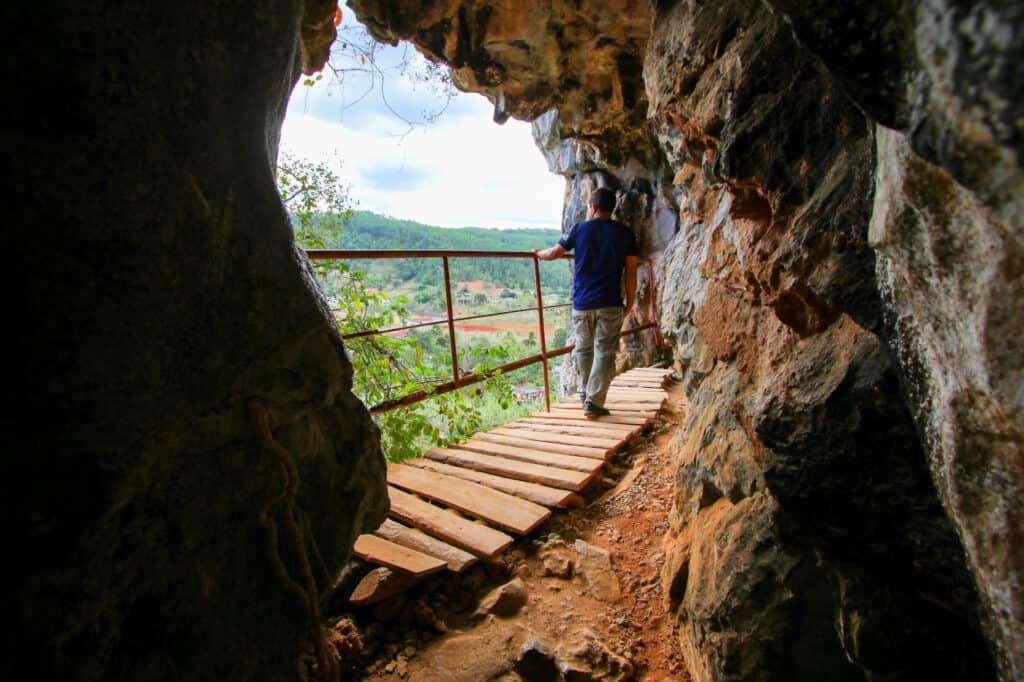
Day Six: Go Caving in Vinales
On your last day in Vinales, you could do other farm tours or simply relax around town. But for something a bit different, take a day trip from Vinales to visit the largest cave system in Cuba.
Gran Caverna de Santo Tomás is just a 30-minute drive away and is composed of more than 46 km of galleries in eight different levels. Take a 90-minute guided tour to see the stalactites and stalagmites, underground pools, and other interesting rock formations.
Your casa particular should be able to arrange a driver, and maybe even the tour. Cubans are entrepreneurs and everyone knows each other in these small towns. Don’t be surprised if you find one person doing multiple jobs; tour guide, driver, cook, entertainer!
In the evening make sure not to miss the music and dance venues that line Cisneros Street. 3J Bar Tapas is a great place to grab a rum, pull up a rocking chair, and watch the world go by.
Vinales is the perfect place to get a sense of Cuban life outside the city. There may not be an amazing internet connection or public transport, but everyone is smiling, and help is never too far away.
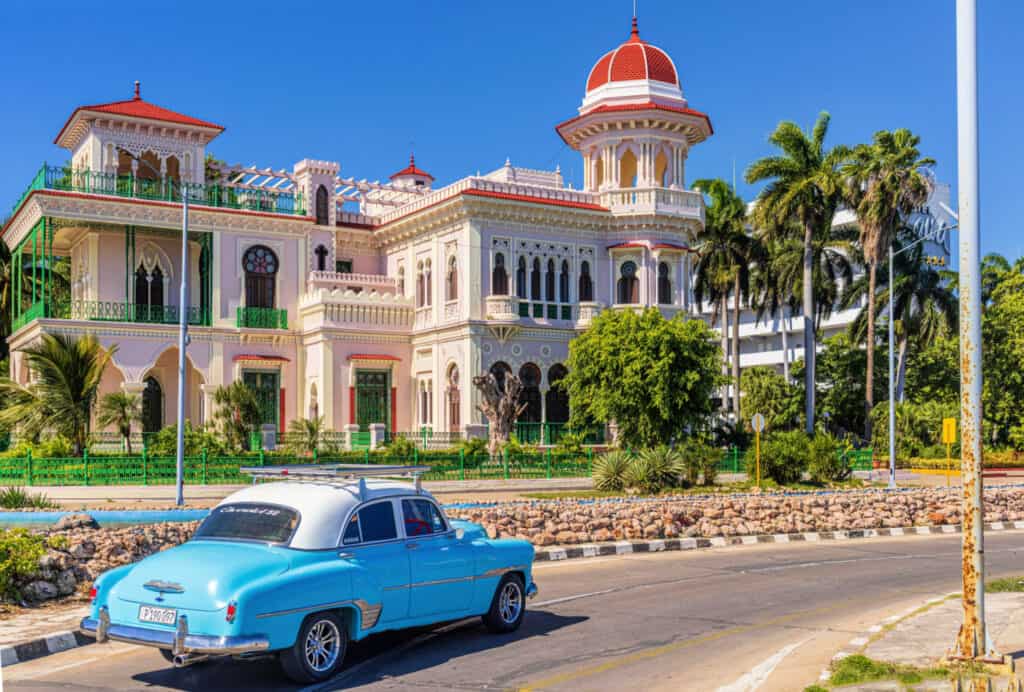
Day Seven: See the Architecture in Cienfuegos
Next up is a visit to Cienfuegos, which translates to ‘One Hundred Fires’. The city was founded in 1819 by French immigrants from Bordeaux and Louisiana, and you will notice the buildings have strikingly different architecture to the rest of Cuba.
There is an unusual combination of Baroque, Gothic and Moorish styles. Visit the Jose Marti Park and the central plaza on your first day to get a taste of the city. Many say it’s the most beautiful main square in Cuba.
A visit to La Reina Cemetery is also a must while in the city. Declared a national monument in 1990, the impressive statues and headstones make it one of the most interesting places to visit in the city.
In the evening head to the well-known Te Quedaras restaurant for traditional Cuban food, great drinks, and a lively atmosphere. We loved the pina coladas, and the Cuban music playing well into the night.
Stay at the Casa Buena Vista for bright airy rooms right in the center of Cienfuegos. The eclectic design, with everything from old vinyls to patron saints stuck to the walls, made us fall in love with this home from home. The terrace and lively bar are also fantastic for meeting other guests.
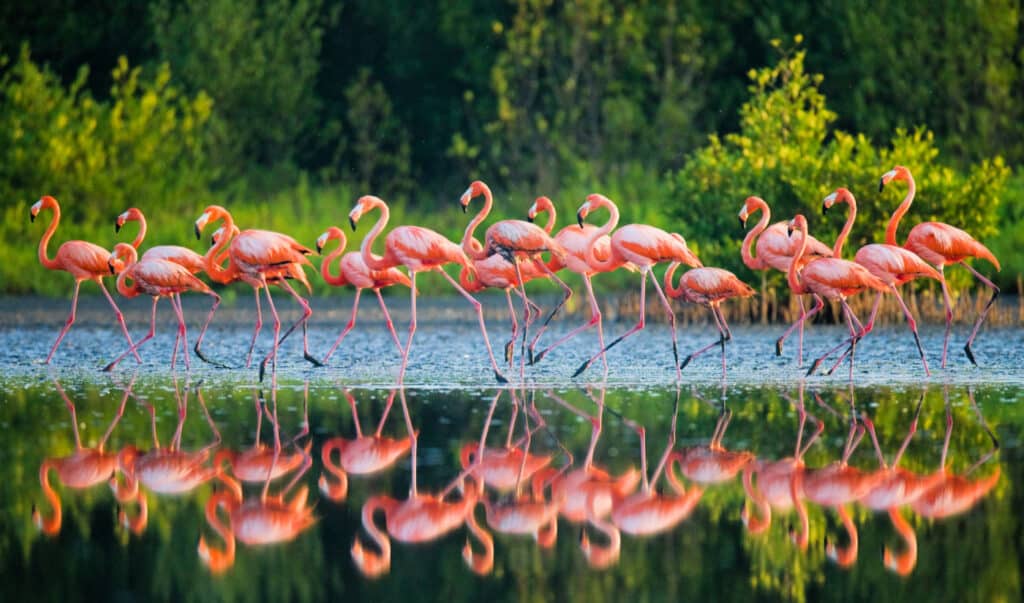
Day Eight: See Flamingos and Bathe in Waterfalls in Cienfuegos
On your second day in Cienfuegos, explore the surrounding area with its diverse landscapes and abundant wildlife.
For a chance to spot pink flamingos head to Laguna Guanaroca, just a 30 minute drive out of the city. Take a guided tour of the lake to learn about the local wildlife, flora, and fauna that make this part of Cuba their home.
Another option to get out of the city for a while is a visit to El Nicho, a beautiful and popular swimming hole fed by waterfalls. A round-trip taxi will cost you about U.S. $30 from Cienfuegos center. It’s a great way to cool off in the summer heat and hang out with the locals.
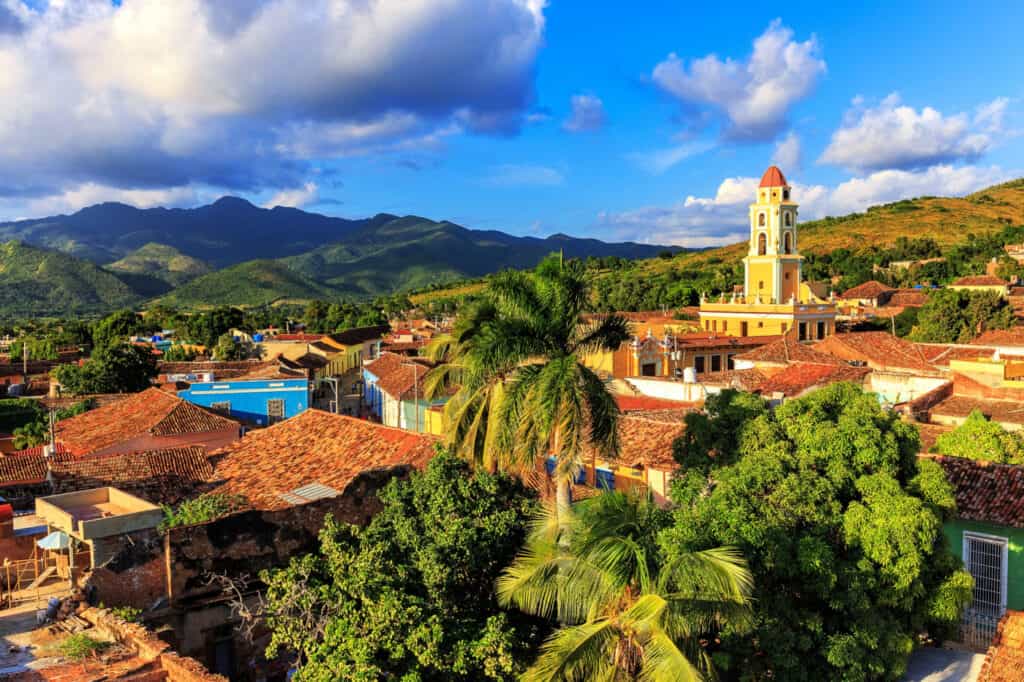
Day Nine: Visit the Historic City of Trinidad
Travel east to Trinidad on day nine, and the furthest point on your trip around Cuba.
Trinidad is the Cuba you’ve always imagined. Colorful houses, straw hats and cigar toting locals. It’s the second oldest city on the island. Trinidad was founded in 1514 and declared a UNESCO World Heritage site in 1988.
Visit Plaza Mayor to see the beautiful 17th-century structures and get to the heart of the local culture. Grab a coffee and watch the world go by as you soak in the atmosphere in this lively, picture-perfect town. Or take a walking tour of the area.
Get some of the best views over town from Museo Nacional de la Lucha Contra Bandidos. Then in the evening visit one of the music venues hidden in an underground cave, like Disco Ayala.
Stay at Casa Barmarin , located in the pedestrian area of Trinidad, right between the markets. The tranquil gardens and rustic rooms are stylish and full of eco-friendly little touches, but the casa still retains its Cuban charm. A highlight is the outdoor terrace and seating area, the perfect place to unwind from a busy day’s sightseeing.
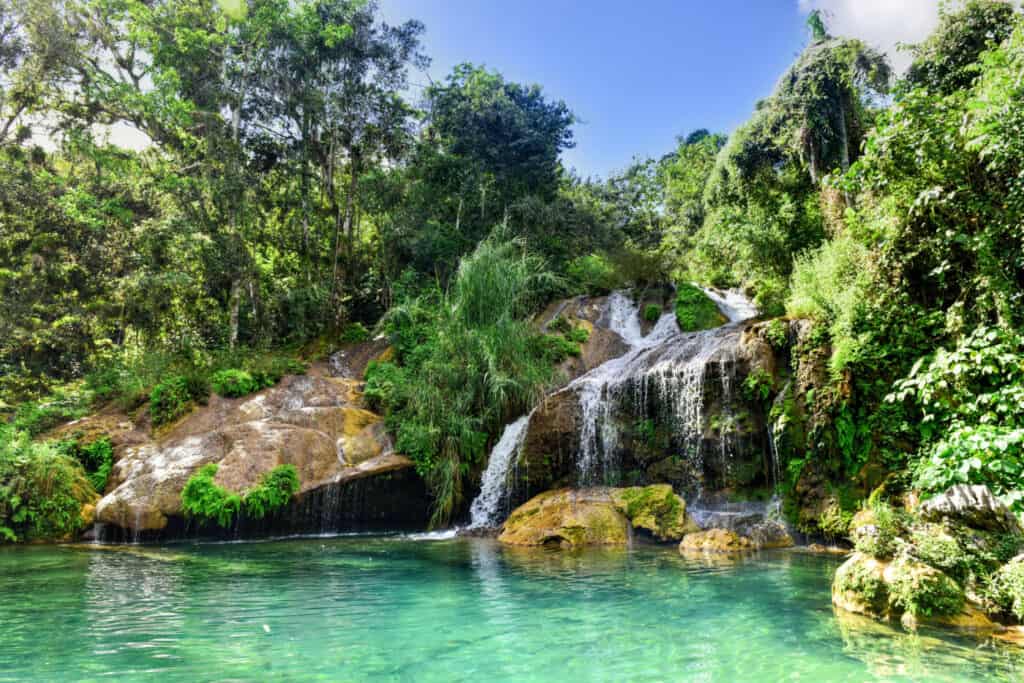
Day Ten: Day Trips from Trinidad
There’s plenty to do outside of Trinidad too. If you’re feeling energetic, visit the stunning mountains of Topes de Collantes. Take a seven kilometer round trip hike to Salto del Caburni, a 60-meter-high waterfall with impressive views of the surrounding area.
Another great thing to do near Trinidad is to take a steam train ride to visit the abandoned sugar plantations at Valle de Los Ingenios. It was the center for sugar processing and refinery and brought a lot of wealth to Trinidad during the 17th and 18th centuries.
There were 56 sugar mills in total powered by more than 11,000 slaves, bringing with it Afro-Cuban heritage like Santería, a syncretic religion between Catholocism, and Yoruba beliefs.
If you can, fit in a visit to the untouched reefs at Playa Ancon, and chill by the sea. Head back to Trinidad to try some of the local catches at the best paladares, like fresh snapper at Restaurante San José, or grilled octopus at Vista Gourmet.
In the evening try a Canchánchara, a potent rum cocktail, at the Taberna La Canchánchara. It’s one of the four drinks that Cuba’s best known for along with the mojito, daiquiri, and Cuba libre.
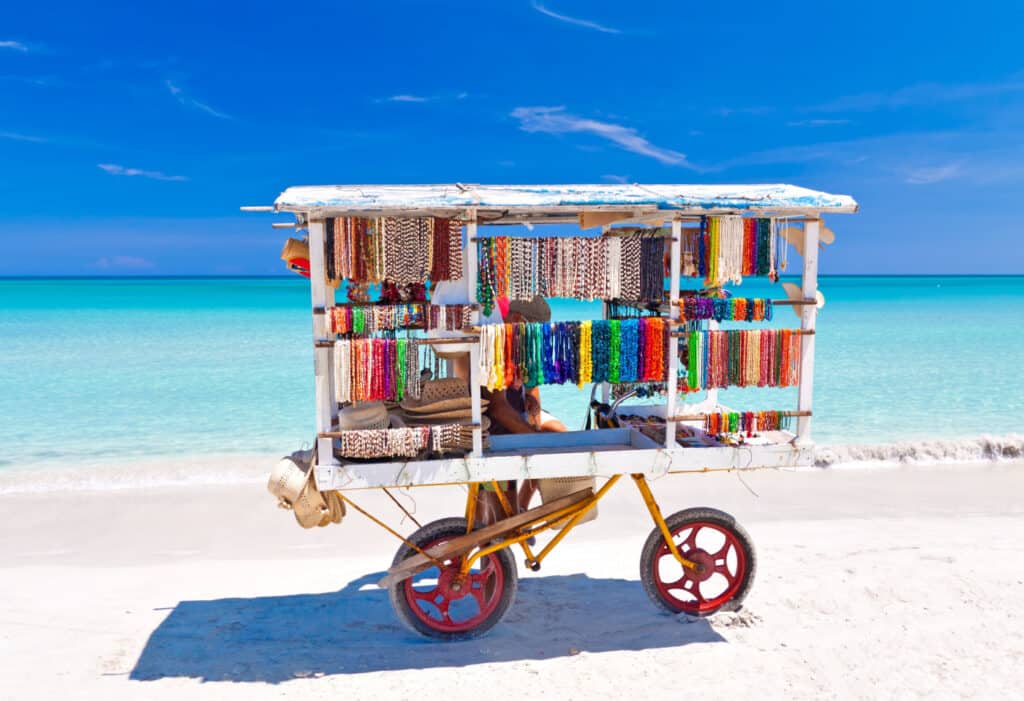
Day Eleven: Take a Trip to the Beach in Varadero
Spend the last few days in complete contrast to the rest of your trip to Cuba by visiting the largest tourist resort in the Caribbean. Located on the 20-kilometer long Hicacos Peninsula, Varadero boasts over 60 hotels (mostly all inclusive). It’s famous for its white sand beaches and is a vital part of Cuba’s tourism industry.
Playa Varadero offers all of the western comforts the rest of Cuba lacks, like public toilets as well as conveniently located cafes and beach loungers. It’s the perfect place to unwind and relax in total peace and quiet, with a mojito in hand of course!
But it’s not all beaches and cocktails. Visit the landscaped gardens of Parque Josone, the old Hershey chocolate factory, or the nearby town of Matanzas to get to know the area better.
Stay at the relaxed Casa de Betty y Jorge right in the middle of Varadero. This place has everything you need for a peaceful stay, plus there’s a great Italian restaurant next door. One of the highlights of this casa is the location, you can easily grab a bite to eat in town and head out to Varadero Beach.
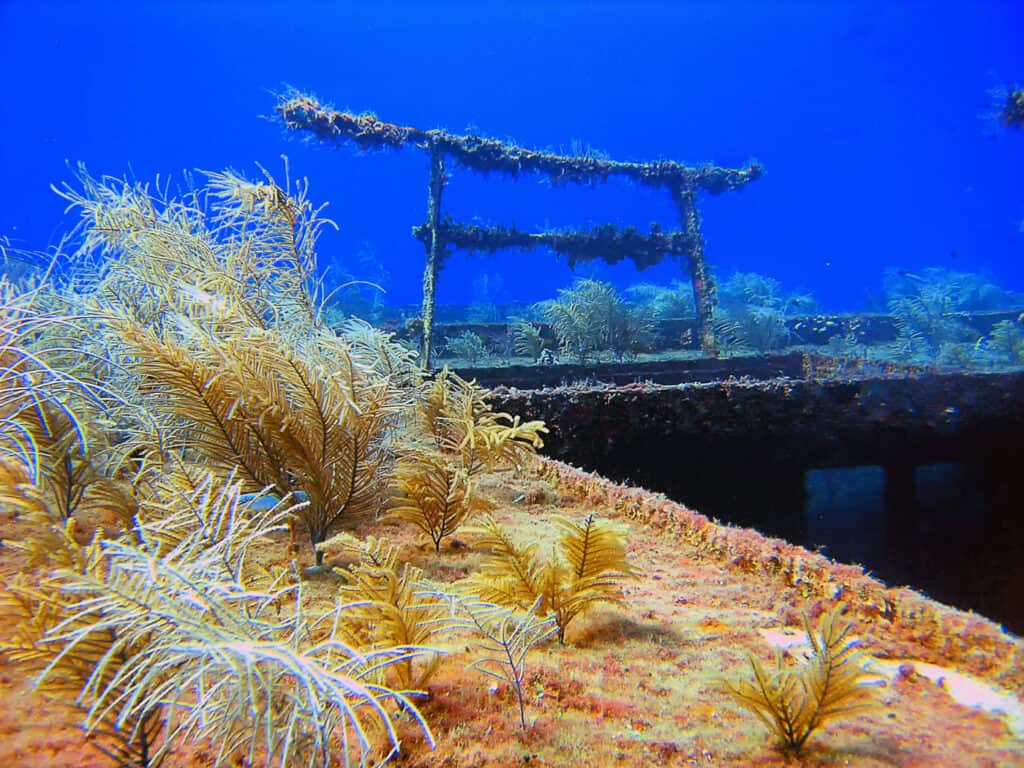
Day Twelve: Go Scuba Diving in Varadero
For me, one of the main reasons to go to Varadero is scuba diving. Visit Cayo Piedras del Norte located five kilometers north of Playa las Calaveras to dive a sunken towboat, a missile carrying gunship, an airplane and the Coral Negro yacht.
The marine park here was created during the 90’s and has since attracted a plethora of sea life. You can also snorkel some sites or take a glass bottom boat tour of the area.
There are some fantastic dive sites dotted around the many cayes and coves surrounding Varadero. Tours are easy to book from your hotel reception, and don’t break the bank either.
Fill your day with all of the underwater wonders of Cuba, this is the Caribbean after all.
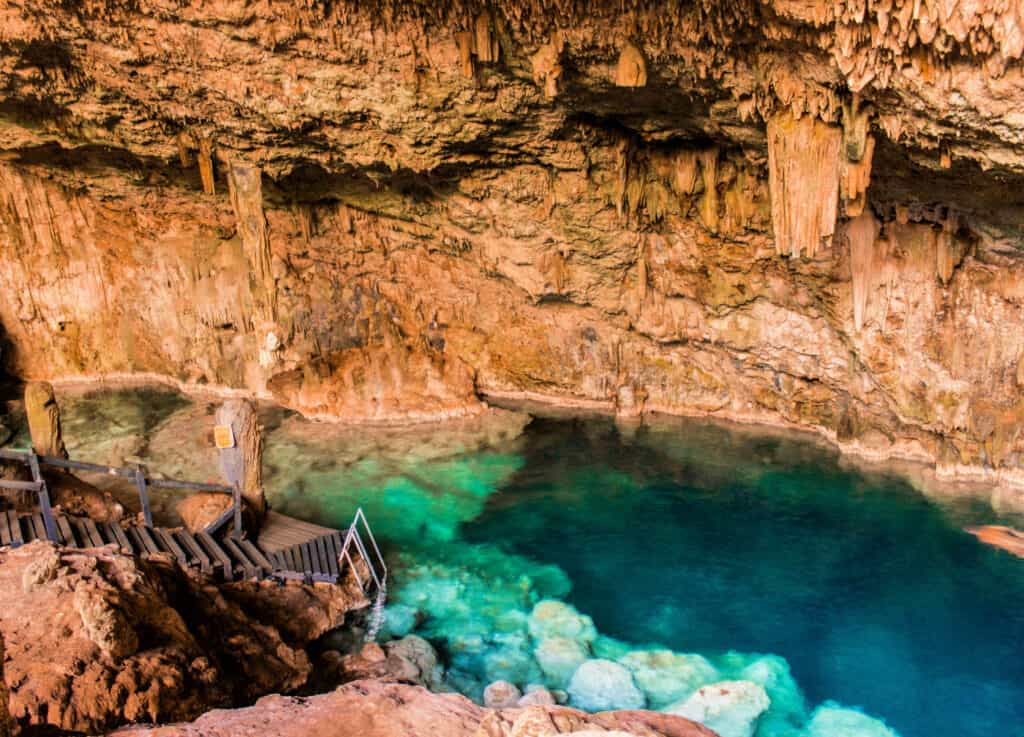
Day Thirteen: Off the Beaten Path Things to do in Varadero
If you get tired of the pristine beaches and out of this world diving, there are plenty of other things to do in Varadero too.
Visit 47 pre-Columbian cave drawings in Cueva de Ambrosio. Only recently found in 1961, they are thought to be around (an astonishing) 2000 years old. Then head to the Varahicacos Ecological Reserve to uncover 2,500-year-old human remains as well as ancient pictographs.
You can also take a day trip to explore the cenote at Cueva Saturno or visit the amazing coral reef at Playa Coral, just a 30-minute drive away in Carbonera.
The great thing about Varadero is the crowds of tourists don’t tend to leave the resorts, so you can have the beautiful surrounding area all to yourself!

Day 14 Havana: Spend the Last Night Sipping Mojitos and Salsa Dancing in Havana
Head back to Havana for a fitting end to your time in Cuba. It’s hard to fit in everything this city has to offer and there are a few extra things to do on the last day here. Visit the Almacenes San José Artisans’ Market, one of the best in the city, for local handicrafts and produce to take home as souvenirs.
After a day checking off anything you missed the first time around, get the ferry over to Casablanca. There are fantastic views over the old town, and the neighborhood feels very different to the rest of the city. My favorite spot is the Christ of Havana statue.
Visit La Cabaña de Che Guevara (Che Guevara’s modest house) and the Fort of San Carlos of the Cabin. Don’t miss the “Cañonazo”, a nightly event in which ceremonial soldiers re-enact the historical firing of the cannon that once announced the closing of the city gates. Try to arrive around 8pm for a good view as the cannon is fired at around 9pm.
Another option is to head to one of the most famous spots in Cuban musics’ history. The Legendarios del Guajirito Buena Vista Social Club is the place to be on your last night in the city. If you haven’t heard the album or seen the film don’t worry, you will be familiar with the Buena Vista Social Club by the time you leave Cuba. Eat before you arrive as the food is nothing to write home about, but the music and dancing is a great way to end your time in Cuba.
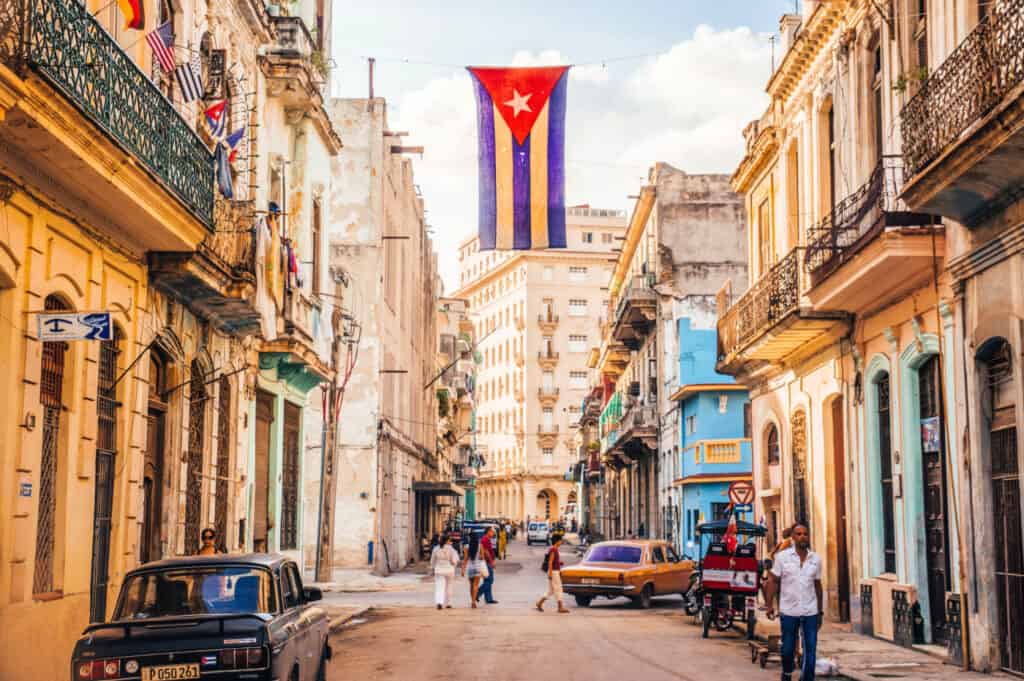
That’s How to Spend 14 Days in Cuba!
This is an easy way to spend two weeks in Cuba. Fit in some of the major sights, a few off the beaten path adventures, and some cultural highlights.
You could cut down some beach time in Varadero if you have less time or alternatively spend more time in Trinidad. But remember, if you are going it alone don’t try to fit too much in. Allow plenty of time for last minute changes and “Cuba time”, things might just take a bit longer than you were expecting!
How useful was this post?
Click on a star to rate it!
Average rating 4 / 5. Vote count: 1
No votes so far! Be the first to rate this post.
Thanks so much!
You can follow along on my travels through my social media accounts below
Sorry you didn't find this article useful!
Help me improve it by leaving your comments below
All feedback is anonymous and emailed directly to me. If there's anything I can do to improve the quality of this article, please do let me know and I'll make the suggested changes within 24 hours
Lauren Juliff
Lauren Juliff is a published author and travel expert who founded Never Ending Footsteps in 2011. She has spent over 12 years travelling the world, sharing in-depth advice from more than 100 countries across six continents. Lauren's travel advice has been featured in publications like the BBC, Wall Street Journal, USA Today, and Cosmopolitan, and her work is read by 200,000 readers each month. Her travel memoir can be found in bookstores across the planet.
Related Posts

How to Spend One Week in Mauritius: An Itinerary for First-Time Visitors

How to Spend Two Weeks in Belize: An Itinerary for First-time Visitors

How to Spend Three Magnificent Days in Tbilisi, Georgia: A 2023 Itinerary

How to Spend Three Perfect Days in Delhi: An In-Depth Itinerary

How to Spend Three Magical Days in Cusco, Peru: A 2023 Itinerary

How to Spend Two Amazing Weeks in Peru: An Itinerary for First-Time Visitors
Leave a reply cancel reply.
Your email address will not be published. Required fields are marked *
Meet Lauren Juliff

Signed in as:
- Rumba All-Stars
- Endorsements
Our Mission:
CALI2CUBA is an organization dedicated to the promotion and preservation of Afro-Cuban culture.We seek to teach, nourish and engage the community by presenting fundraisers, workshops, concerts and travel experiences that bridge gaps in musical history and knowledge. C2C believes that promoting Afro-Cuban music will help create solutions to social, political and economic ills and create community that will make a positive impact in the world.
What is C2C?
Offering Services such as: Housing, Transportation, Food, Educational & Travel Experiences.
Personalized packages and religious sensitivity is an integral part of our mission. Our trips are designed for people who are serious about studying their craft.
We encourage our traveling artists/educators to host an exchange workshop of their choice for the local community. This helps create an actual Cultural Exchange.
Relate, Connect, Grow
CALI2CUBA prides itself in offering one-of-a-kind experiences for travelers from all walks of life. We believe the best experiences are made when the traveler gets to create meaningful relationships with their instructors and get to connect with the local community. Our master teachers are the most in demand players and dancers in the local secular and non-secular music scene. This gives you access to the contemporary styles of the dance and drum and provides a fundamental base from which to grow.
Music is the link:
At Cali2Cuba we believe that music is the key element in understanding culture and a lens from which to tell history. As an organization based out of the United States, we believe it is critical to understand Cuban music history because it has permeated American music, culture and society profoundly. Familiarizing yourself with these historical and musical links, you will gain a better understanding of our current musical, social and political climate.
Cultural Promotion
As cultural promoters our job is to engage and unite the community wherever we go. Event planning is one of our specialties, we organize a variety of events ranging from concerts to festivals, fundraisers, master classes, and open street rumba's. This is a key part in reinforcing our community of artists and standing up for what we represent. We deeply believe the drum is one of the strongest voices, a tool that through history has helped amplify the voice of the people, with the drum we can make a positive impact.
Culturally Conscious
The relationship between the United States and Cuba has taken a new turn, with this change comes social responsibility. At C2C we believe there is tremendous importance in working with the Cuban community to ensure the most beneficial experience possible for students and educators. This is accomplished by hiring well respected elders to teach as well as young cuban students looking for experience in their respective fields. Cali2Cuba’s goal is to bring jobs and learning experiences to artists and educators who seek to expand their networks and skills.
CALI2CUBA Video
Raices profundas - oya en casa de bencomo.
CALI2CUBA brings you a rare performance featuring Cuba's top dance company Raices Profundas!
RAICES PROFUNDAS Rare Performance! YEMAYA
CALI2CUBA brings you a rat performance with Cuba's top dance company Raices Profundas! Live in Juan Bencomo's house in Jesus Maria, La Habana
RAICES PROFUNDAS: IYESA en casa de Bencomo!
Raices Profundas imparte una demostración de baile Afrocubano para el curso de CALI2CUBA.
Check out our new online store!
Cali2cuba shop.
You can now order goods through our new online store! Featuring Cuban musical instruments such as Bata drums, Cajons, Drum Skins as well as Afro-Cuban Literature and Educational Drum & Song books.
TRAVEL CONSULTATION
Transportation & rentals.
Chat with a Cuba travel specialist via phone call or video chat!
HOUSING & DINNING
Book your Casa Particular now! We have a list of: Rooms, Apartments, & Houses to select from!
CONCERTS & SPECIAL EVENTS
Airport pick-up, City-to-City transportation, Tours & Travel excursions are just a phone call away!
TRANSLATOR & SPANISH INSTRUCTION
Join the fun! We want to connect you with a variety of concerts, parties, and events to pick from!
WORKSHOPS & DEMONSTRATIONS
Educational activities aimed at learning about the roots of Cuban music, dance, rhythm and culture.
We offer professional translation for your personalized activities as well as one-on-one Spanish language instruction.
More Information
Travel questions, miguelito león & cali2cuba.
La Habana Cuba
(U.S.) 1.805.455.0229 (Cuba) 5.623.5742
Copyright © 2020 Miguelitoleon - All Rights Reserved.
Cultural News and Events

Cuba Tourist Board of Canada
- REQUIREMENTS FOR CANADIANS PASSENGERS TRAVELING TO CUBA (updated as of Nov 2, 2023)
- Travelling from Canada to Cuba, you just need a valid Canadian passport, if your passport is from another country, you need your Canadian resident card or a work or study permit that includes a multiple-entry permit attached to your passport. For Cuba, you need the tourist card (the tourist card is included in your plane ticket and is issued by the airline on board)
- All passengers arriving to Cuba from a direct flight from Canada, do not need to present a vaccination passport.
- Medical insurance is required for Cuba, medical insurance must cover any type of medical emergency including COVID-19, so in case of a medical emergency the tourist is responsible for paying the costs, for this reason, Cuba suggests having medical insurance for all types of medical emergencies including covid. If you are unable to obtain insurance in Canada, you can purchase medical insurance in Cuba at the airport or visit www.cubatravel.cu. For more information on what the insurance includes, contact the representative at the Insurance desk at the airport in Cuba.
- Since January 1, 2022, travelers must complete the customs and health declaration form, this is done online and the website to visit is: https://www.dviajeros.mitrans.gob.cu . All travelers must complete this information online 48 hours before traveling to Cuba. Once the form is completed, you will receive a QR code by email. You must show an electronic or printed version of the QR code to the authorities upon arrival. If you have any problems and you can't fill out the form online because you don't have internet access, the printed form will be available on arrival at the airport in Cuba to fill it out.
- CURRENCY: The local currency is the Cuban Peso (CUP). The convertible peso has been discontinued and is no longer accepted in Cuba. US and CAD dollars are accepted anywhere in Cuba. At tourist areas which includes hotels, restaurants and shopping malls, payment is only accepted with debit/visa cards or visa / mastercard credit cards from Canadian banks . Customers who do not have a credit card can buy a prepaid card in Cuba at the airport or at any money exchange kiosks at hotels . Payments outside the tourist areas are all in Cuban pesos (CUP); We recommend exchanging Canadian dollars for pesos as needed and only if you plan to travel OUTSIDE of tourist areas, since you will not be able to change the remaining pesos into Canadian dollars at the end of the holiday.
For additional information, please contact Cuba Tourist Board at:
E-mail: [email protected] TL : 416 362 0700

View all posts by:
Comments are closed.
Currency Exchange

Tailored Travel, Real-Time Solutions: C2C App Redefines Your African Journey Based on Your Preferences!

Plan your best trip ever
Unlock personalized adventures across Africa with the C2C Travel App. Download now to seamlessly explore destinations tailored to your interests, backed by advanced AI, Google APIs, and real-time guidance. Revolutionize your journey for confidence, accessibility, and cultural immersion with just a tap!

Necessitatibus eius consequatur ex aliquid fuga eum quidem sint consectetur velit
Personalized Recommendations
Embark on a journey personalized to your preferences with the C2C Travel App, designed for exploration throughout the diverse landscapes of the African continent. C2C redefines your travel experience by tailoring recommendations for accommodations, transportation, attractions, and activities, ensuring each suggestion reflects the unique tapestry of cultures and destinations across Africa. Bid farewell to generic travel advice and discover a world where every detail is as distinctive as the continent itself.
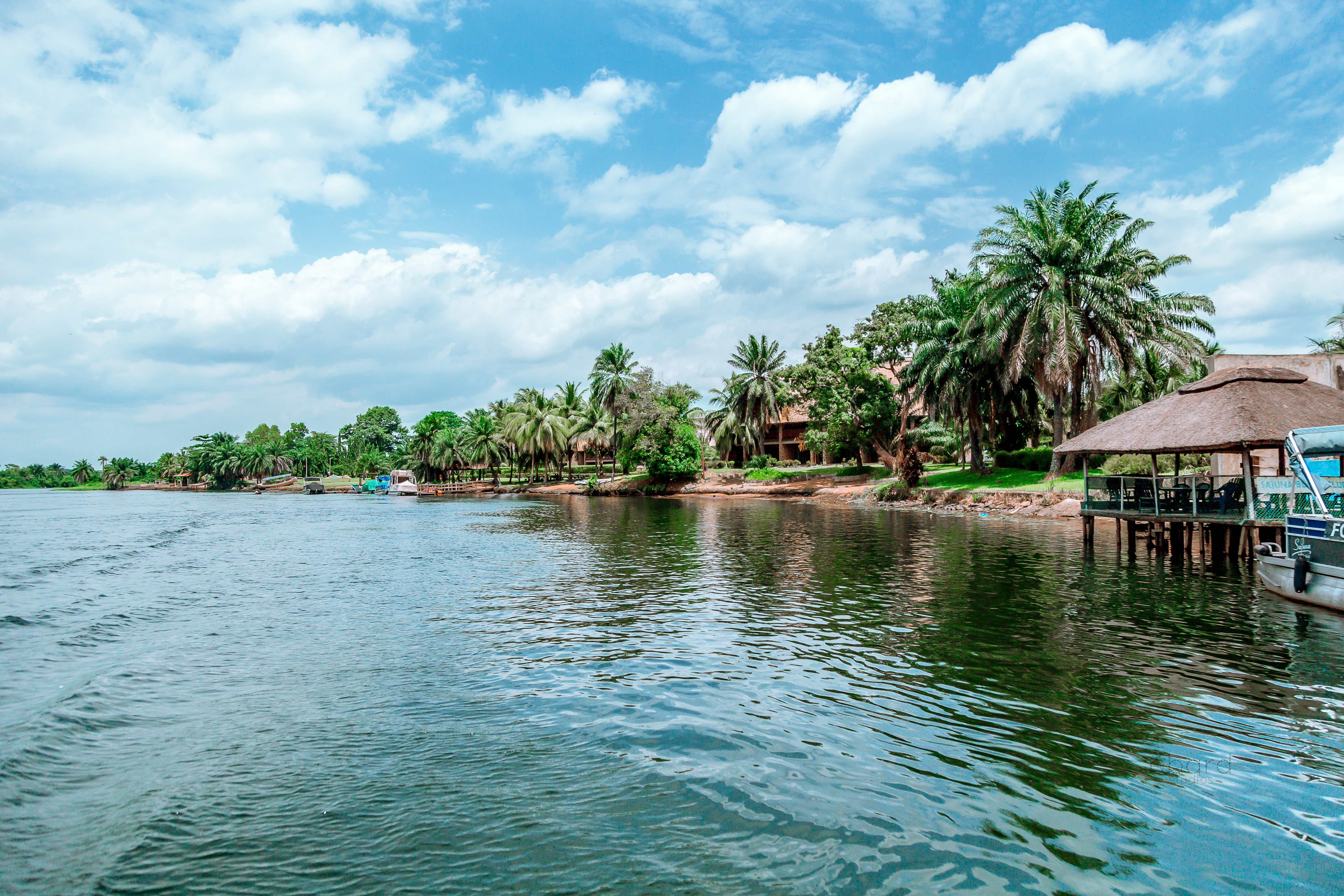
Real-Time Travel Guidance
Going beyond traditional travel planning, C2C provides instant insights into visas, health requirements, transportation options, and safety concerns, ensuring you have critical information at your fingertips, regardless of where your journey takes you. For travelers seeking a trusted companion throughout the continent, C2C navigates the complexities of the world, providing real-time guidance for every step of your journey.
Download Our App

Call To Action
Duis aute irure dolor in reprehenderit in voluptate velit esse cillum dolore eu fugiat nulla pariatur. Excepteur sint occaecat cupidatat non proident, sunt in culpa qui officia deserunt mollit anim id est laborum.
Get in touch with
- Private Jet Charter
Jose Marti International Airport
Jose marti international airport private jet charter, jose marti international airport private jet charter prices, airport hours and location.
Jose Marti International Airport is open 24 hours a day. The airport is located about 11 miles (19 kilometers) south of downtown Havana at International Airport Jose Marti, La Habana, Cuba.
Nearby Aircraft
Private jets available for charter to and from Jose Marti International Airport include the Learjet 35A , Beechjet 400 A , and Citation CJ3 light jets; the Learjet 60 , Hawker 700 and Citation III midsize jets; and the Gulfstream IV , Challenger 601 and Falcon 2000 large jets.
The Jose Marti International Airport is a joint civil-military airport with one asphalt runway that is 13,123 feet (4,000 meters) long and 148 feet (45 meters) wide. Its elevation is 210 feet (64 meters).
Airport Amenities
Jose Marti International Airport offers a wide range of top-notch airport amenities such as luxurious ground transportation services and car rental services. It also has excellent catering facilities and offers hotel booking services.
Private Jet Charter to and from Jose Marti International Airport
At Paramount Business Jets you can hire chartered private jets to and from Jose Marti International Airport with as little as 4 hours of notice. All flights booked via Paramount Business Jets are operated by certified direct air carriers that meet and exceed the FAA part 135 and 121 protocol or a foreign equivalent safety authority. Furthermore, Paramount Business Jets subscribes to ARGUS for their third party safety checks of operators, aircraft, and crews prior each and every flight to and from Jose Marti International Airport and worldwide.
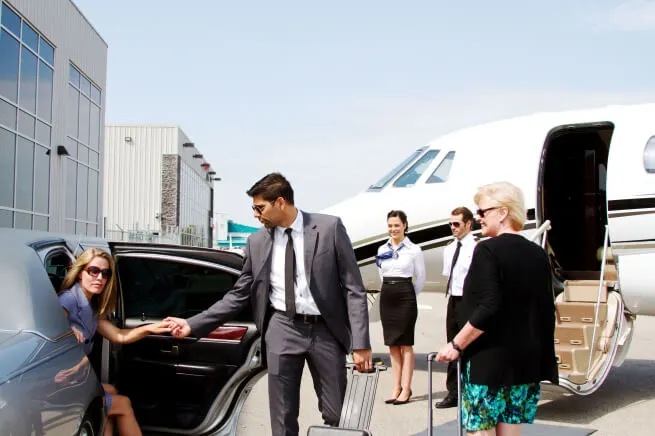
Airport Information
Paramount Business Jets offers private jet charter flights to and from Jose Marti International Airport. If you are chartering a private aircraft into the area, whether for business or to visit one of the many monuments, Jose Marti International Airport can be your most convenient choice.
Chartering a private jet to and from Jose Marti International is a great option for private jet charter flyers traveling to Havana, the capital of Cuba, or the surrounding area.
If you are interested in booking a private jet charter flight to or from Jose Marti International Airport, contact us and we will happily discuss the details of your trip. Our aviation experts will take care of all your needs and requirements. You can book your flight with as little as 4-hours notice.
Need assistance? Contact us. Because specific airport information such as available aircraft, airport hours or facilities may change, we recommend getting in touch with us to confirm the details before you book your trip.
The ICAO code for Jose Marti International Airport is MUHA and its IATA code is UHA.
The airport, also known as Rancho Boyeros Airport, is among the five airports in Havana and Cuba’s main international and domestic gateway. The airport serves several millions of passengers every year.
It is important to note that the United States has restrictions for aircraft flying to Cuba, including a period in which all private charter jets were prohibited from flying there. Please contact a professional in U.S.-Cuba travel restrictions before booking a flight.
Jose Marti International has two FBOs that can help make your flight as comfortable as possible. They offer services such as ground transportation, car rentals, hotel booking, catering services and a VIP lounge and business center.
Runway information
Fbos at jose marti international airport, muha, hav, metar weather.
- Weather Clear
- Observed 09:43 AM
- Temperature 21 °C, 70 °F
- Preticipation 0.0 mm
- Humidity 88%
- Pressure 1013 mb
- Cloud Cover 0%
- Visibility 9%
- Wind Speed: 4mph, 7km/h
- Wind Direction: 90°, E
Traveling frequently from Jose Marti International Airport?
If you fly frequently and you want have access to the finest private jets at any time, our jet card program is perfect for you. Our Jet Card allows you to fly anywhere, at any time and with any aircraft that fits your needs. Contact us for more information or read more about our Jet Card program .
Frequently Asked Questions
Do i have to stop for customs when i fly on a private jet.
Passengers on all international private charter flights will have to stop at customs. In certain countries, you may have to go through customs at a specific port of entry; for example, you must stop in Tahiti to perform customs checks en route to Bora Bora. You’ll also need to stop at the first port of entry when entering the U.S. from Mexico.
How much rest does the crew need before they can depart again?
Crew members are required to have a 10-hour rest period within each 24-hour cycle. The maximum duty day is 14 hours and must be followed by a 10-hour rest period at their hotel. When scheduling a flight, operators usually account for 12 hours of rest instead of 10. These extra two hours allow the crew time to get to their hotel, rest for the required time, and return to the airport.
How long does a fuel stop for a private jet flight take?
The average fuel stop takes 45–60 minutes. To speed up fuel stops, the operator, or pilots may call ahead, so a fuel truck is waiting for the aircraft on arrival. For smaller jets, a fuel stop can take as little as 30 minutes.
Will my private jet charter use the same airport as a commercial airline?
No. When you charter a private jet, you generally fly into a private airport. However, you could access the same airports as a commercial airline if you request to do so or if there are no private airport options. However, using a large mainstream airport like Los Angeles International or London Heathrow is often a bad choice for private jets, as flying to a smaller regional private airport is much faster and often makes for a more luxurious experience.
Is the age of an aircraft a safety factor?
Aircraft age is not a safety factor. However, if the aircraft is older and hasn’t been refurbished properly, it may cause flyers some inconvenience, such as overheating, faulty air conditioning, or faulty plumbing in the lavatory.
How much luggage am I allowed to bring on a private jet?
As a rule of thumb, each seat on a light or midsize jet equates to one passenger and one item of luggage. Each item of luggage is considered to be the standard 23 kilograms, or about 50 lbs. Large jets are designed for long-range trips, which typically involve longer stays, so you can carry more than one item of luggage per person.
Are there aircraft that are wheelchair accessible?
There are many aircraft that are wheelchair accessible. Most of them are large jets or above and have a straight aisle. If the jet has a zigzag aisle – like the Falcon 900 – it will be difficult to maneuver the wheelchair onboard the aircraft. You’ll also need the right type of wheelchair; many motorized wheelchairs won’t fit and can’t be collapsed. If this is the case, you’ll need a smaller, temporary wheelchair. Some aircraft operators have smaller wheelchairs that can be used. Please speak with your Paramount private jet expert to review your aircraft options.
Can I fly with large sums of cash?
Yes, you can. This is a common occurrence for many private jet clients. You can fly with up to $5 million in cash as long as you declare that cash when coming through customs. For domestic trips, there’s no limit and no need to declare it.
Which private jets come with flight attendants?
In the United States, large jets and above are required to have flight attendants onboard; in Europe, flight attendants are used on midsize jets and above. Flight attendants require their own seats. Larger jets and above have a jump seat near the cockpit for the flight attendant to use, meaning the attendant generally stays out of the cabin.
Which airports offer ramp access, allowing the client to drive their car right up to their private jet?
Private jet clients can often have a limo drive them right up to the private jet, or even drive their own car to the plane. That said, different airports have different policies, and some may not offer ramp access. Please speak with your Paramount Aviation Advisor to review your options for a given trip.
Do private jets come with Wi-Fi?
Many private jets do have Wi-Fi, and it’s increasingly available free of charge on U.S. domestic flights. On international flights, prices range from $3.00-$8.50 USD per megabyte used. This means that opening up social media sites that are rich in images and videos could quickly cost you $20 – and downloading a feature-length movie could cost thousands!
When is on-demand private jet charter better than buying a block of hours?
Private jet charter can be a lot cheaper than buying a block of hours for a one-way flight, as you can access floating fleets or an empty leg to reduce the cost. With a block of hours, the price covers a round trip. If you only fly one-way, you are effectively paying double.
What is a carbon-neutral flight?
Every aircraft burns jet fuel and emits a certain amount of carbon dioxide (CO2) into the atmosphere. This can be offset via one of several carbon offset programs that allow private jet clients to purchase a certain number of carbon credits to offset the emissions from their flights. A carbon-neutral flight is one that offsets the carbon emissions it uses via a formal process.
Can I have a flexible departure time for my private jet flight?
Yes, it is possible to have a flexible departure when flying privately. Operators typically offer a 30-minute to two-hour window, but you can request a longer window as long as it doesn’t interfere with the maximum crew duty day or their next scheduled flight. Please confirm with your Paramount Aviation Advisor at the time of booking your jet.
When should I hire a Boeing Business Jet?
Boeing Business Jets (BBJs) have unique amenities that extend far beyond sheer size and are often equipped with 1-2 bedrooms and 2-3 bathrooms (one more of those bathrooms may even offer stand-up showers.) These airliner-based executive aircraft also feature tall or ‘stand-up’ cabins that are also longer and wider than more typical corporate aircraft.
How soon can I have a private jet ready from the time I call in the request?
Generally speaking, with as little as 4 hours of notice. However, we have had wheels up in as little as 32 minutes from the time our client called us to book the flight and had them in the air. It depends on a few factors, such as how long it takes for the pilots to arrive at the airport (generally, there is a 2-hour call-out time for the pilots), and whether the aircraft is ready to go at the airport with no repositioning needed. Our Jet Card members enjoy faster booking since they have funds on account and can confirm a flight with a simple email.
Can I access my luggage while in flight?
On most private jets, you will be able to access your luggage during the flight. That’s because luggage and passengers are situated on the same level. This is in contrast to commercial airlines, where checked luggage is stored in a cargo hold. On large private jets, luggage is often stored in a compartment behind the lavatory, which means easy access to your bags.
When are private jet charter landing and takeoff slots applicable?
A landing or takeoff slot is simply a small window of time in which your aircraft is scheduled to fly in or out of the airport. You will need a landing and takeoff slot if you fly to a high-density airport in the United States or one that is hosting a special event with a significant number of aircraft arriving and departing. If you’re flying internationally, you will need a landing and takeoff slot for all major European cities. Please check with your Paramount Aviation Advisor at the time of booking for a specific route.
What kind of in-flight catering is available on a private jet?
Other than the standard snacks and drinks, you can order local cuisine options for your catering on board. In short, anything that doesn’t need to be cooked can be ordered; hot food must be precooked and then warmed on board.
Can I bring pets with me on private jet flights?
Of course! Just let us know in advance. The majority of the operators and aircraft owners allow pets onboard. In some cases, a small cleaning fee may apply. That said, there are specific requirements that must be met when traveling with your pet, including making sure that all documentation and vaccination records for your pet(s) are correct and up-to-date. Dogs and cats must also be at least eight weeks old and weaned when traveling within the U.S.
Would you like our assistance?
24/7 customer service is there for you.
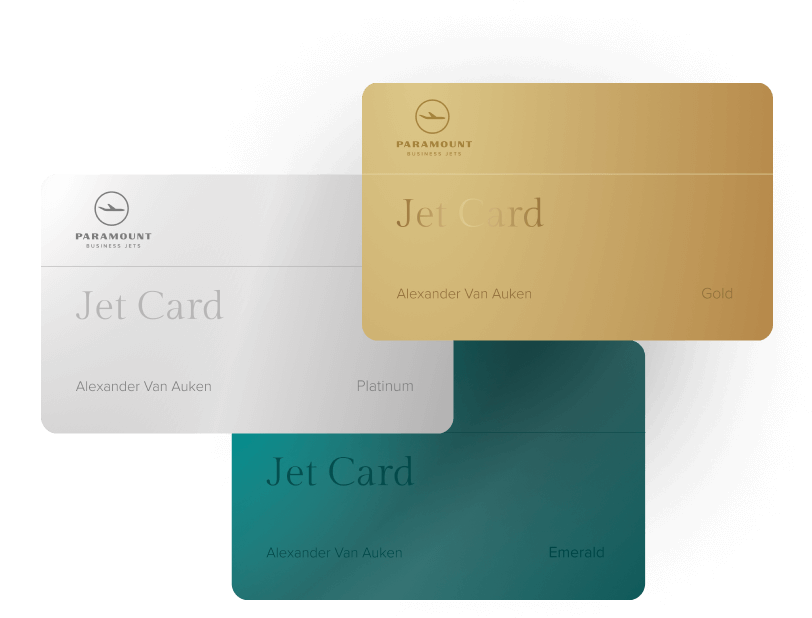
Paramount Jet Card Program
Our Private Jet Card Membership offers a pre-paid program that gives you access to the finest and safest private jets in the world
From the blog

We've put together an insightful guide spotlighting today’s most budget-friendly private jets, highlighting not only the most cost-effective rental options but also the best deals if you're looking to purchase. This guide dives into the world’s most economical private jets, comparing hourly rental rates and purchase prices to give you a clear picture of the best deals out there. Below, we detail three of the cheapest private jets in each category. Feel free to explore the links for each aircraft to delve deeper into their specs and backstories. Our goal? To make your entry into the luxurious realm of private jet travel as accessible and affordable as possible. Take a look at the most attractive private jet rental and purchase prices available right now:

On Monday, April 8, 2024, residents of North America will witness something that will not occur again for 20 years when the Earth, moon, and the sun line up to create a solar eclipse. Regarded as one of nature's most spectacular events, people along the path of the solar eclipse will witness a surreal midday darkness as the moon blocks out the light from the sun.

In observance of International Women's Day, a global celebration that shines a light on the achievements of women and calls for greater gender equality, the aviation industry reflects on its journey towards inclusivity and diversity.
Top Private Jet Destinations Near Jose Marti International Airport
- Florida Keys
Top Private Jet Destinations in the USA
- Santa Monica
- Beverly Hills
- Hollywood Hills
- Santa Barbara
Train drivers strike for third time in four days
Members of the Aslef union are walking out in an almost two-year dispute over pay with no sign of a breakthrough.

News reporter @niamhielynch
Monday 8 April 2024 08:20, UK
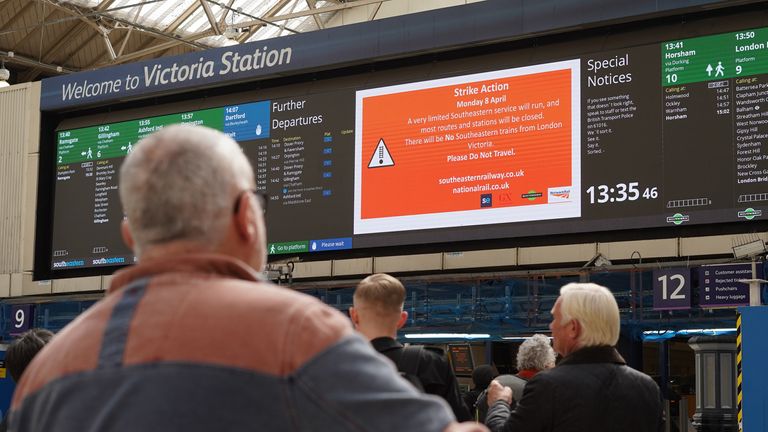
Passengers on some of the UK's busiest rail routes will face travel chaos on Monday as train drivers are set to strike for the third time in four days.
Members of Aslef will walk out resulting in significant reductions in services, especially in East Anglia and the South East.
Train strikes: Full list of who will strike when
Aslef is embroiled in a near two-year long dispute over pay, with no sign of a breakthrough and no talks planned.
The strike will hit c2c, Gatwick Express, Greater Anglia, Southeastern, Southern, South Western Railway, Great Northern and Thameslink.
What train operators are affected?
No c2c trains will run on Monday, with its managing director Rob Mullen saying he was "really disappointed" an agreement hadn't been reached.
"The impact of this ongoing action is significant for our customers and colleagues," he said.
"I'm hopeful that further meetings with the unions are productive and see progress made toward concluding this challenging time for the railway."
Gatwick Express
There will be no Gatwick Express services but Gatwick Airport will continue to be served by the limited non-stop Southern shuttle.
Great Northern
There will be no Great Northern services on Monday.
Greater Anglia
Greater Anglia said its first trains of the day will start later and last trains finish earlier than normal, excluding the Stansted Express.
An hourly train service will operate on the following Greater Anglia routes: Norwich/Colchester and London Liverpool Street, Southend Victoria and London Liverpool Street, and Stansted Airport and London Liverpool Street
A bi-hourly train service will run between Cambridge and London.
No other Greater Anglia services will operate on any other routes.
Southeastern
The operator said most of its routes and stations will be closed. There will be an extremely limited service where trains are running and the operator advised customers not to travel.
A statement said: "If you do travel, expect severe disruption, plan ahead and allow much more time for your journey.
"Trains that are running will be extremely busy, they start later and finish early.
"You may be unable to board trains at some stations, and we estimate that there could be queues for up to two hours due to the very limited service.
"Only 29 out of 165 Southeastern stations will be open. No rail replacement buses will serve stations that are closed."
Southern said there will be no trains running across the vast majority of its network, with a limited shuttle service running non-stop between London Victoria and Gatwick Airport.
South Western Railway
South Western Railway said a significantly reduced service will operate on a small number of lines, while the rest of its network will be closed.
Trains will only run between 7am and 7pm.
There will be no Thameslink services running, except for a limited shuttle service calling at Luton, Luton Airport Parkway and London St Pancras and another limited non-stop shuttle service between London Kings Cross and Cambridge.
The union says the dispute has cost the industry over £2bn, far more than it would have cost to resolve the conflict.
Aslef members at 16 train companies are also banning overtime on Monday and Tuesday which will further disrupt services.
More on Rail Strikes

Train strikes in April and May 2024: Full list of dates and lines affected

Train drivers at five companies vote to continue strike action for another six months - ASLEF

Rail strikes: LNER train drivers to walk out for five extra days in February
Related Topics:
- Rail strikes
Picket lines will be mounted outside the railway stations of operators affected by the strike.
Aslef general secretary Mick Whelan said his members remained solidly behind the industrial action and criticised the government and rail companies for the lack of contact over the past year.

The government introduced a new law last year aimed at ensuring minimum levels of service during strikes, but none of the train companies have opted to use it.
A Rail Delivery Group spokesperson said: "Train companies are working through plans to manage the unnecessary disruption to our passengers caused by this damaging industrial action.
"Minimum service levels are one potential tool for that but they are not a silver bullet.
"In the meantime, we remain committed to resolving this dispute and our offer, which would take average driver salaries to £65,000 for a four-day week without overtime, remains on the table."
Read more from Sky News: Man wanted over fatal stabbing of woman with pram 'Hardest Geezer' runs length of Africa Man arrested after human torso found

Keep up with all the latest news from the UK and around the world by following Sky News
A Department for Transport spokesperson said: "Aslef is the only rail union continuing to strike, targeting passengers and preventing their own members from voting on the pay offer that remains on the table.
Be the first to get Breaking News
Install the Sky News app for free

"Having resolved disputes with all other rail unions, the transport secretary and rail minister have ensured that a pay offer is on the table - taking train drivers' average salaries from £60,000 up to £65,000."
Related Topics

IMAGES
VIDEO
COMMENTS
Surf, Sand & Sun your vacation specialists! C2C Travels is a travel agency based in Utah that arranges travel itineraries for a variety of trips. While we specialize in all-inclusive resorts and cruises, we also craft European and bucket list vacations for individuals and couples too! Our itineraries offer a unique travelling experience no ...
Come To Cuba ! | C2C Travel (Come to Cuba Travel) est une agence de voyage établie à Cuba depuis 1999. Étant l'une des premières agences de voyage étrangère du pays, Nous jouissons de 25 ...
If your travel plans in Cuba include outdoor activities, take these steps to stay safe and healthy during your trip. Stay alert to changing weather conditions and adjust your plans if conditions become unsafe. Prepare for activities by wearing the right clothes and packing protective items, such as bug spray, sunscreen, and a basic first aid ...
2. Entry Requirements: Visa, QR Code, and Health Insurance. How to Get a Cuba Visa. QR Code For Entry. You Need Health Insurance, But It's Included in Your Main Cabin Airfare. 3. Cash is King - Your U.S. Credit Cards Will Not Work. People Will Compete to Exchange Your U.S. Dollars - But Be Careful. 4.
Travel to Cuba for tourist activities remains prohibited by statute. However, the Department of Treasury's Office of Foreign Assets Control (OFAC) has issued general licenses for 12 categories of travel. Individuals who meet the regulatory conditions of the general license they seek to travel under do not need to apply for an additional ...
2. Fill out your passenger information in advance. Cuba uses an online form called D'Viajeros to gather traveler information, including immigration and health data, in advance of travel. Fill out the form digitally up to 72 hours before your arrival in Cuba. 3.
The 12 categories of travel licenses for US citizens. US law states that US citizens can only travel to Cuba on a 'general license' based on one of 12 different approved categories, which include family visits, educational and religious activities, public performances and exhibitions, and the vague sounding 'support for the Cuban people.'Licenses are self-qualifying (there's no long ...
C2C Travel EISTI Report this profile Experience Directeur C2C Travel Sep 1999 - Present 24 years 8 months. Cuba Directeur Operation TEM - SFTO 1995 - 1999 4 ... Ambassade de France à Cuba Cuba. Connect Aline Reynaud conseillère commerciale en agence chez Groupama Méditerranée ...
U.S. law states that those who want to go to Cuba need to qualify for a "general license" based on one of 12 approved categories. The 12 categories currently authorized by U.S. government, for travel to Cuba are: Family visits. Official business of the U.S. government, foreign governments, and certain intergovernmental organizations.
With two decades of travel experience in Cuba, the team at ECC brings you unparalleled access to the very best the country offers. As your trusted authority on compliant and legal trips, we handle all the intricate details to ensure your journey is seamless. Our mission is to enable you to fully embrace Cuba's rich culture, support local ...
Call us in Washington, D.C. at 1-888-407-4747 (toll-free in the United States and Canada) or 1-202-501-4444 (from all other countries) from 8:00 a.m. to 8:00 p.m., Eastern Standard Time, Monday through Friday (except U.S. federal holidays). See the State Department's travel website for the Worldwide Caution and Travel Advisories.
American Travel to Cuba. The short answer to the question "can Americans travel to Cuba" is YES, American citizens can travel to Cuba. Non-U.S. citizens are allowed to travel to Cuba via the United States as well. American citizens can fly from the United States directly to Cuba, travel independently (no need for a group trip or guided trip ...
For most travelers, even travelers from the United States, entry to Cuba is as simple as landing on the island and passing through immigration. However, it's important to be aware of a few important entry requirements to Cuba before planning your trip to Cuba - you'll need to prepare for them before arriving!. We travel to and from Cuba frequently and have helped thousands of travelers ...
The answer is yes, but only with the proper license. Here's where it gets a little tricky: Technically, traveling to Cuba isn't illegal, but once you've arrived, it is illegal to spend money ...
Getting WiFi in Cuba. If a travel guide says there are only one-hour WiFi cards, it is outdated. Now, you can access WiFi on a one-hour or a five-hour card. WiFi is now cheaper in Cuba—it was $5 USD per hour; now, it's $1 USD per hour. We only needed one 5-hour card per person for the whole week.
Greatest Waterfalls in Cuba. Imagine finding yourself in Cuba, surrounded by an exuberant natural environment - where the vivacious green mountains stretch out into a splendid blue sky - while the fresh Caribbean seabreeze brightens your face. And on this tropical voyage, you discover a land of waterfalls on every corner of the island.
C2C Travel (Come to Cuba Travel) est une agence de voyage établie à Cuba depuis 1999. Étant l'une des premières agences de voyage étrangère du pays, Nous jouissons de 25 ans d'expérience dans le domaine touristique, perçus comme un gage de qualité par notre clientèle. Établie à La Havane, ...
Day Four: Stop at Las Terrazas on the Way to Vinales. On the way to your next casa particular in Vinales, stop off at Las Terrazas. Started in 1968 as an ecotourism project, the area contains over half of Cuba's native birds; it's home to 117 species of birds in total, and 12 of them are endemic.
CALI2CUBA is an organization dedicated to the promotion and preservation of Afro-Cuban culture.We seek to teach, nourish and engage the community by presenting fundraisers, workshops, concerts and travel experiences that bridge gaps in musical history and knowledge. C2C believes that promoting Afro-Cuban music will help create solutions to social, political and economic ills and create ...
e-tickets are now available to buy on the c2c app. Simply choose the e-ticket option when buying and download it to travel. You can also save it to your Google Wallet. Don't forget to scan your barcode on the reader at the gates. flag Flag as inappropriate. Use the c2c Train Travel app to buy train tickets and plan your journey.
Travelling from Canada to Cuba, you just need a valid Canadian passport, if your passport is from another country, you need your Canadian resident card or a work or study permit that includes a multiple-entry permit attached to your passport. For Cuba, you need the tourist card (the tourist card is included in your plane ticket and is issued by ...
C2C redefines your travel experience by tailoring recommendations for accommodations, transportation, attractions, and activities, ensuring each suggestion reflects the unique tapestry of cultures and destinations across Africa. Bid farewell to generic travel advice and discover a world where every detail is as distinctive as the continent itself.
The airport is located about 11 miles (19 kilometers) south of downtown Havana at International Airport Jose Marti, La Habana, Cuba. Nearby Aircraft Private jets available for charter to and from Jose Marti International Airport include the Learjet 35A , Beechjet 400 A , and Citation CJ3 light jets; the Learjet 60 , Hawker 700 and Citation III ...
Passengers on some of the UK's busiest rail routes will face travel chaos on Monday as train drivers are set to strike for the third time in four days. ... The strike will hit c2c, Gatwick Express ...